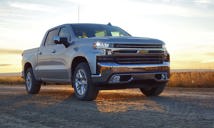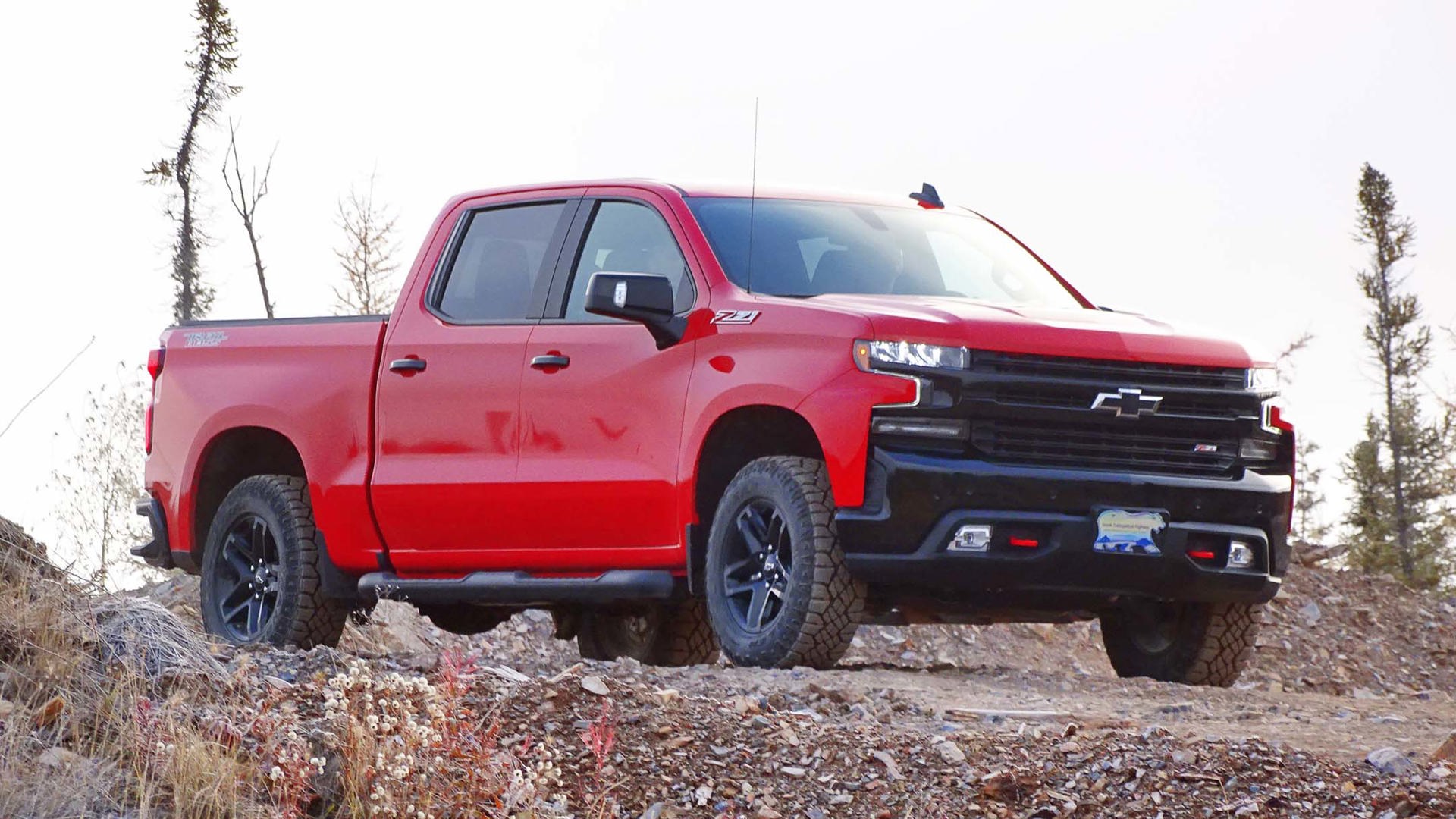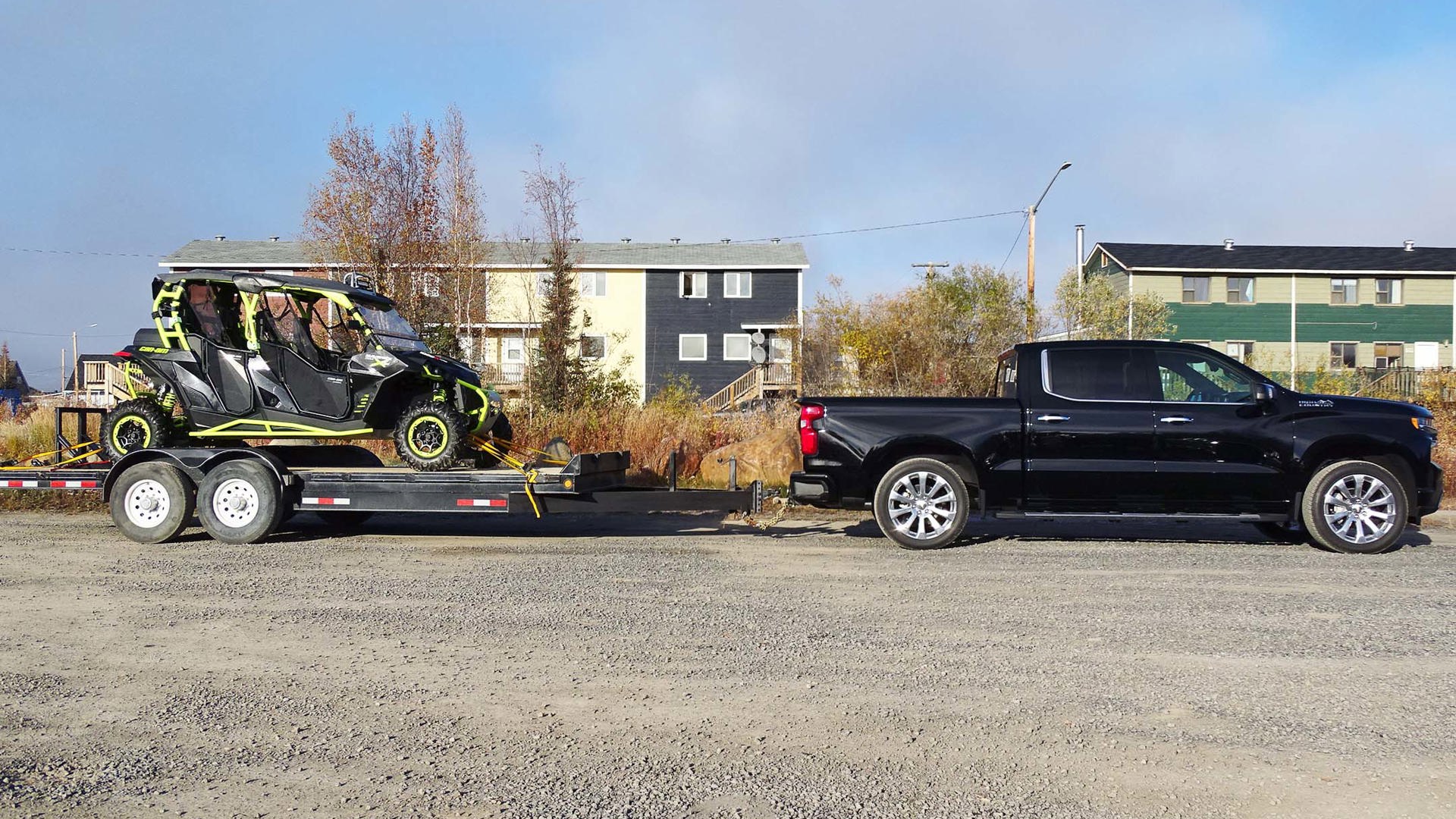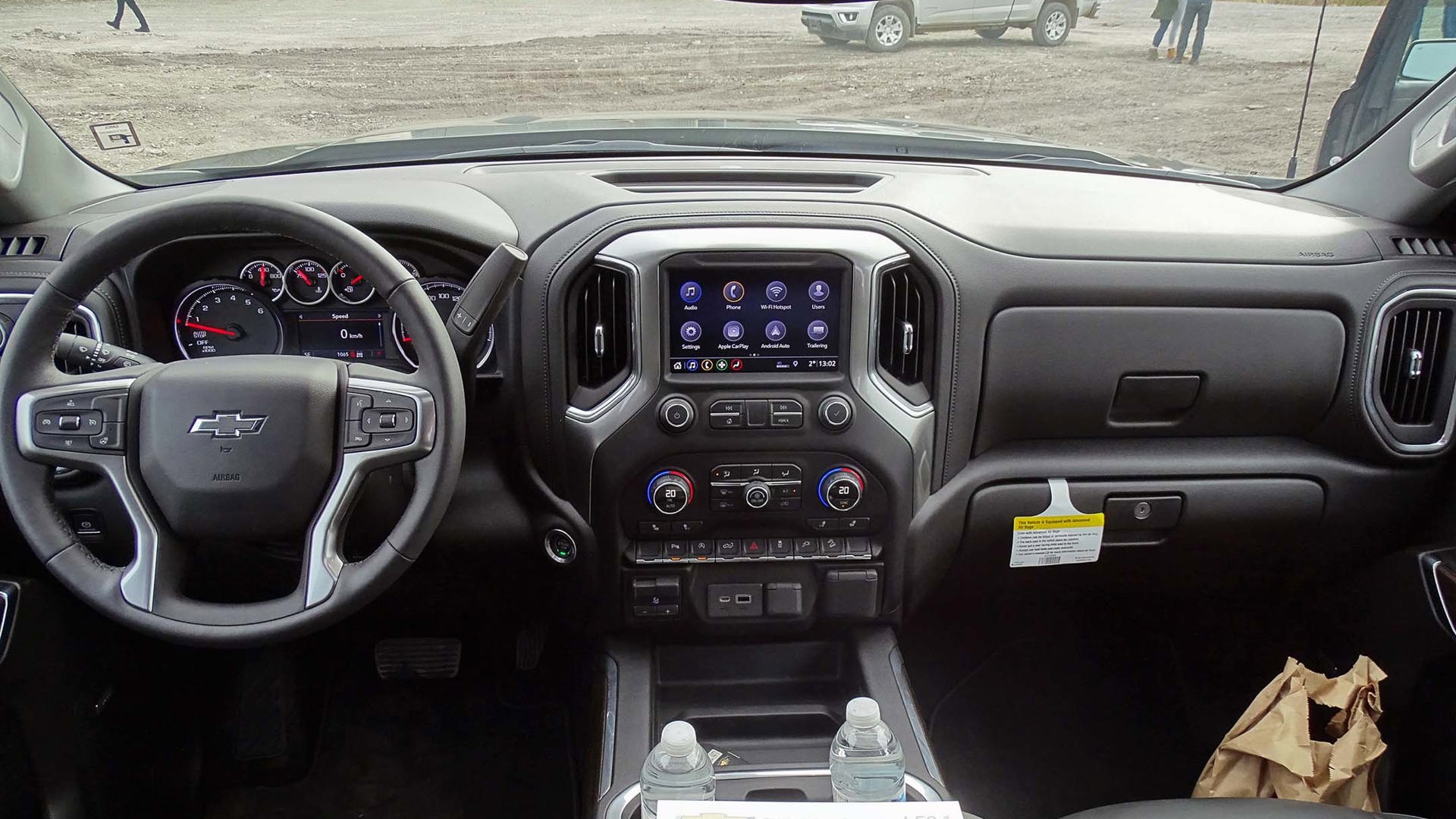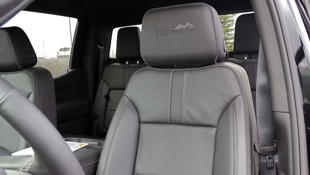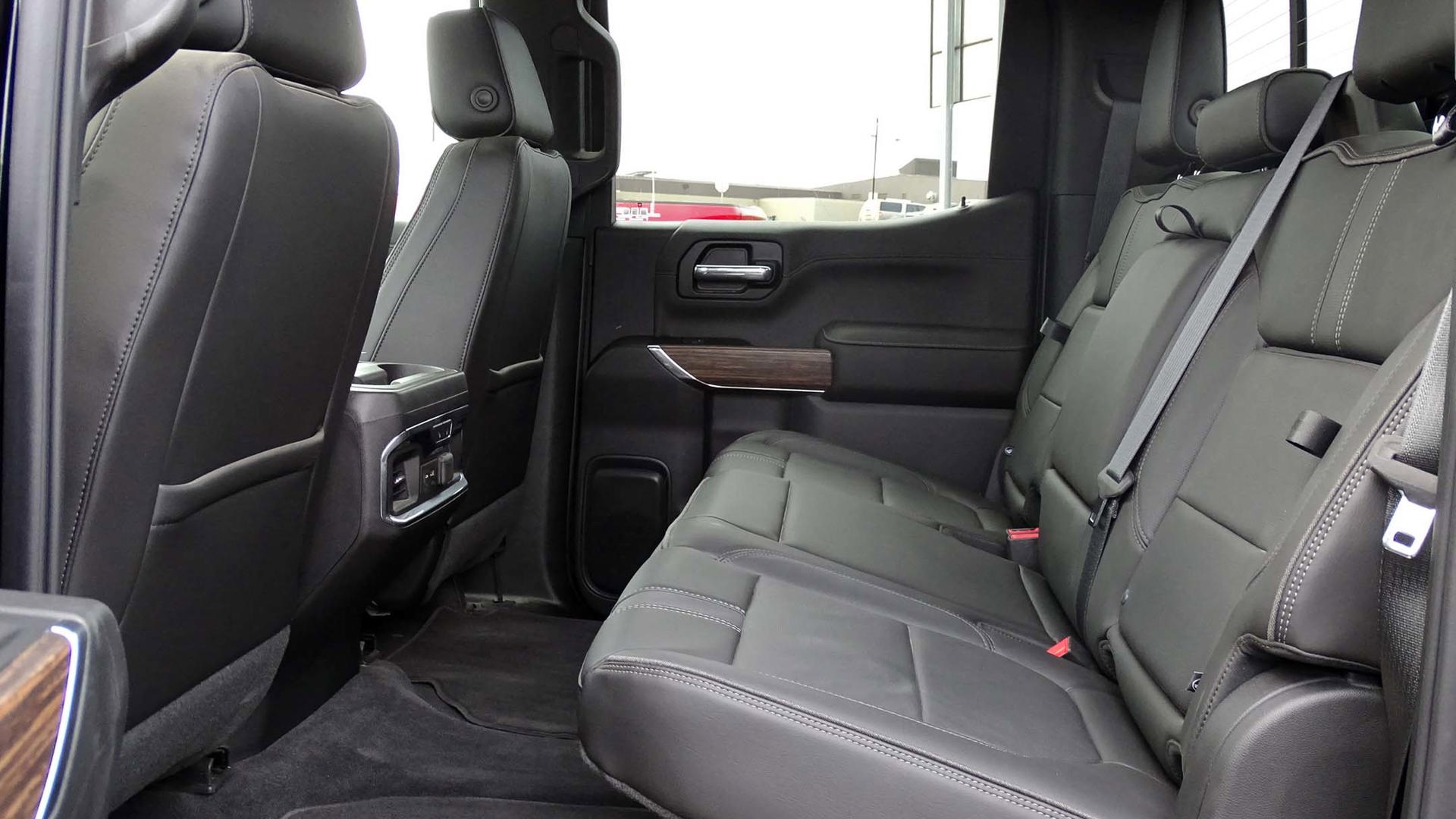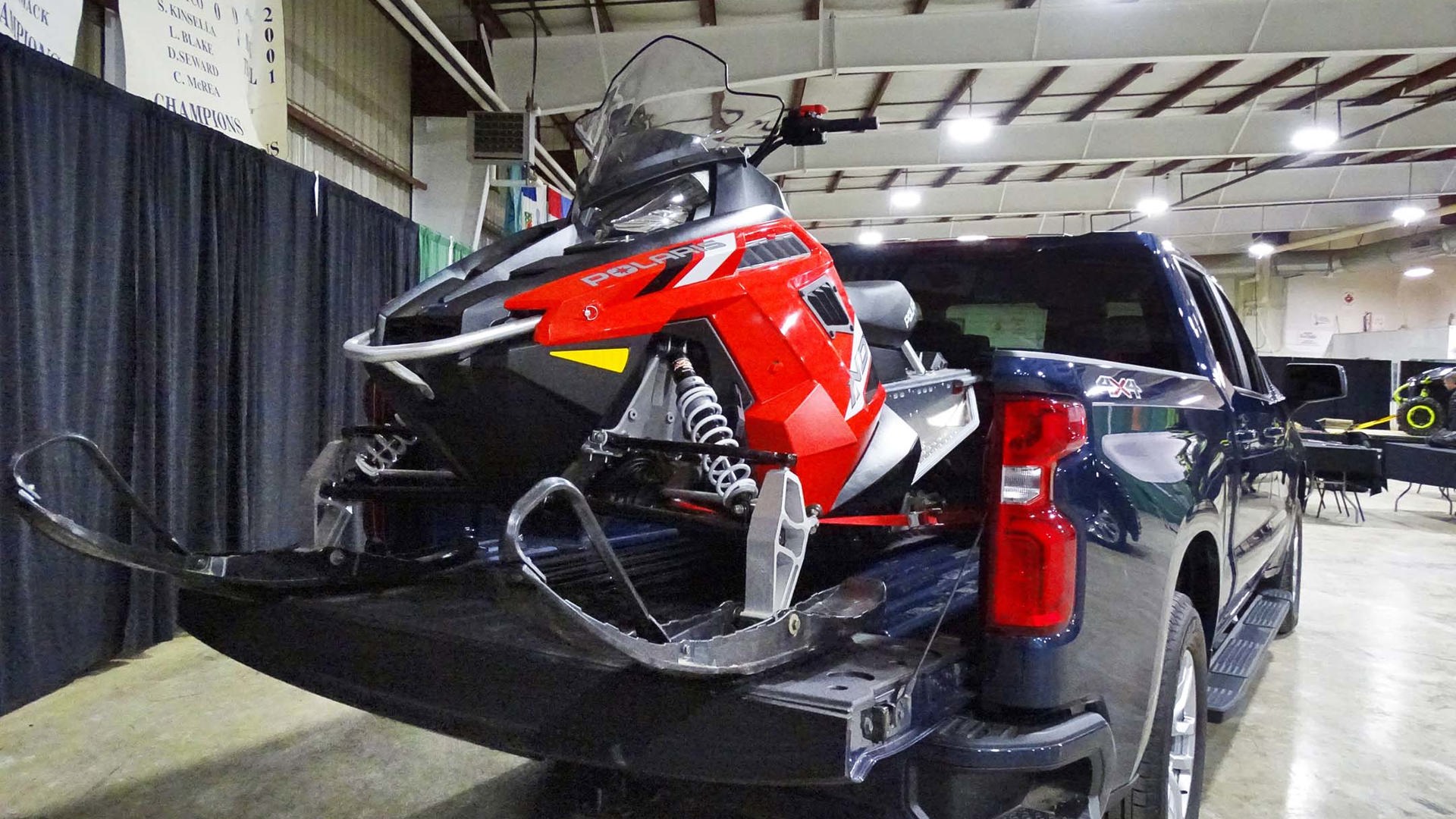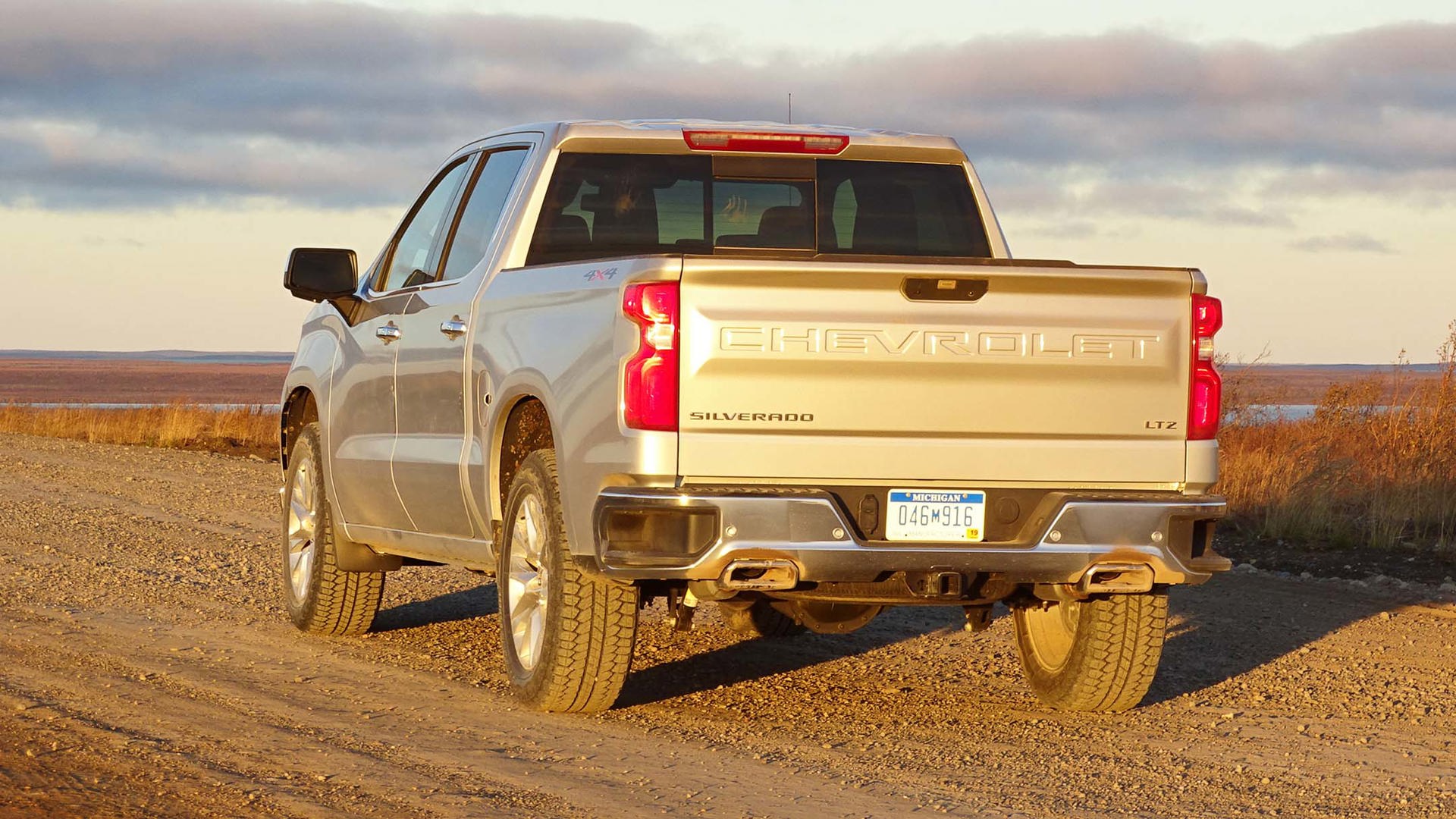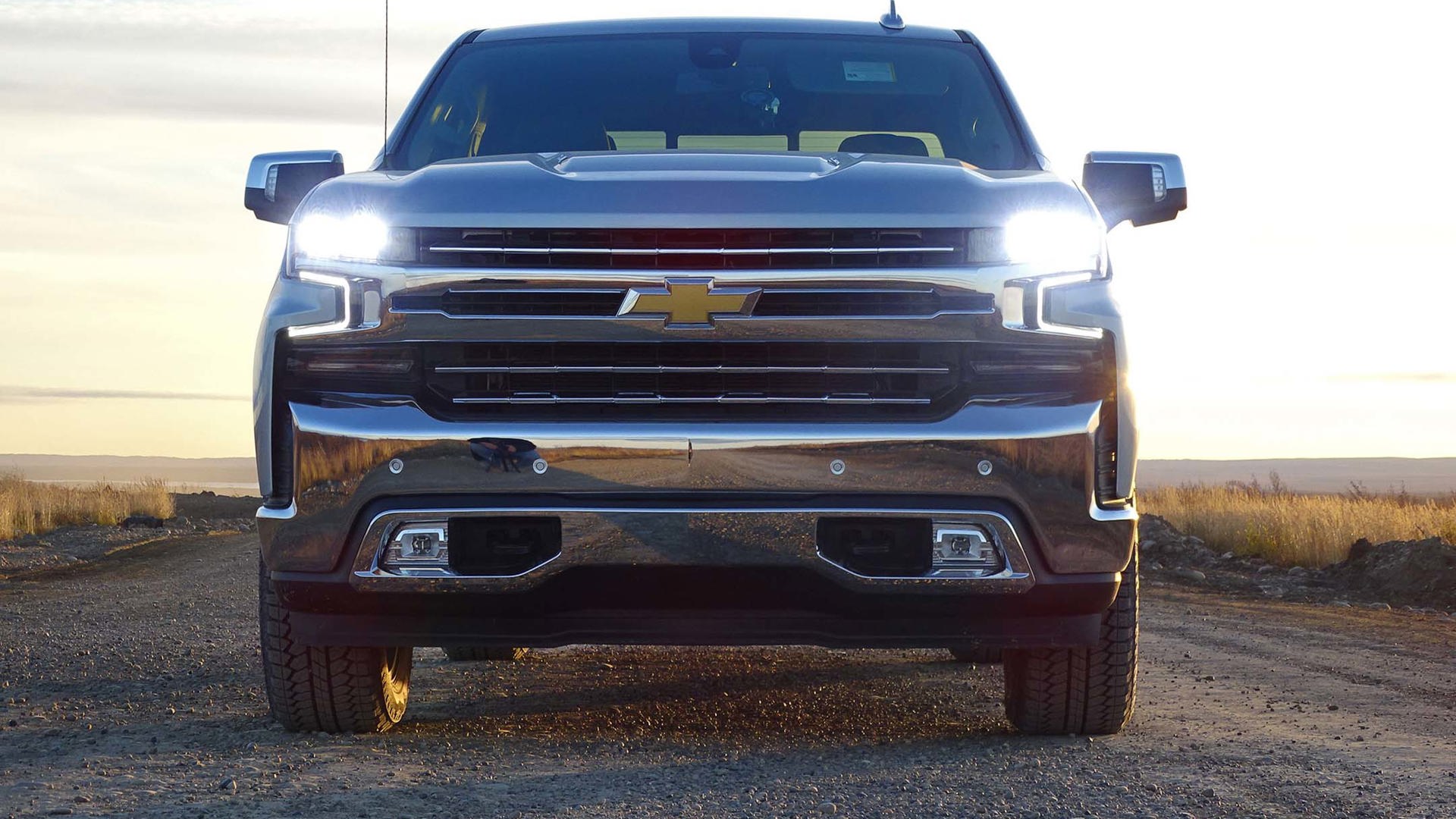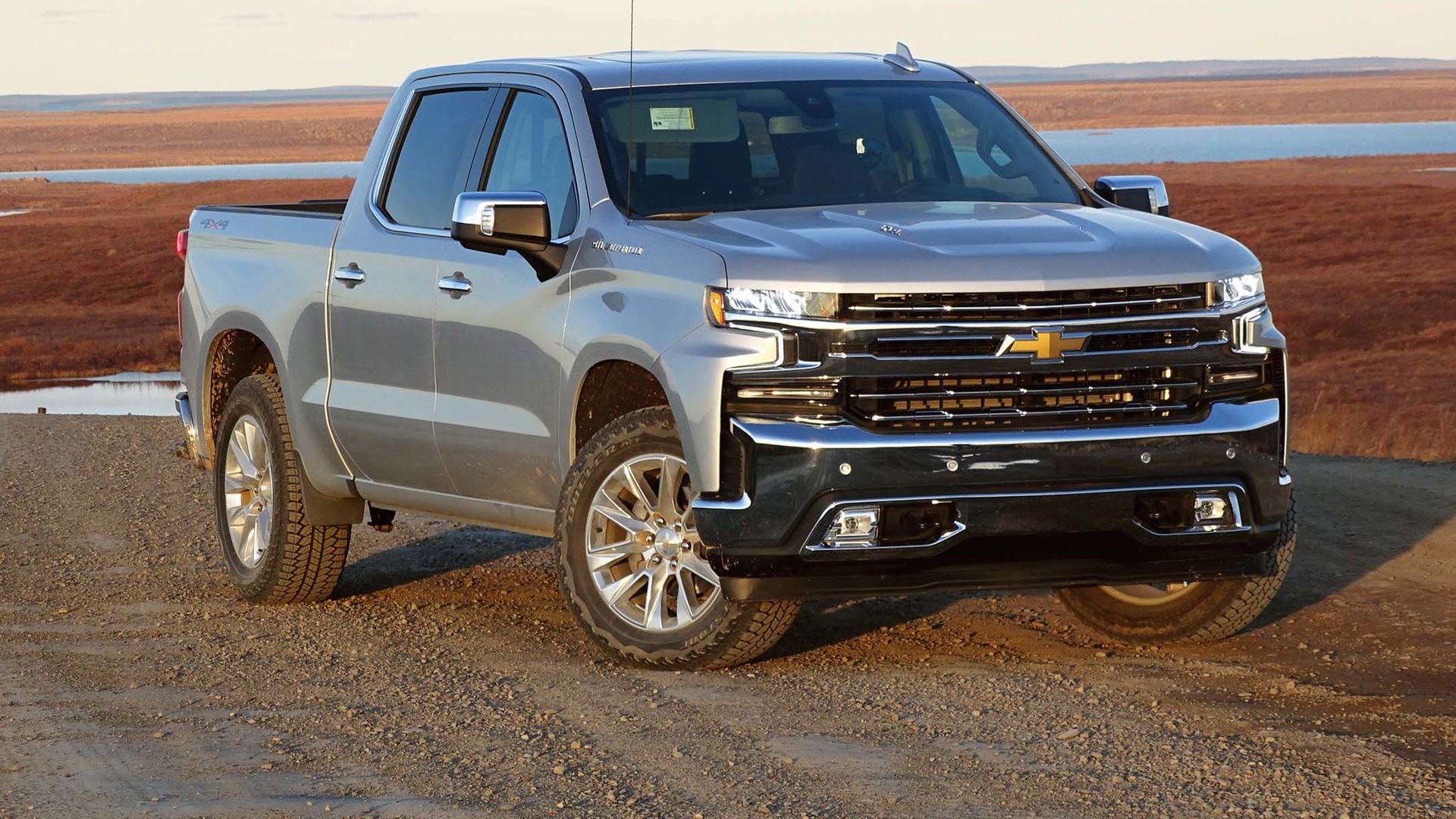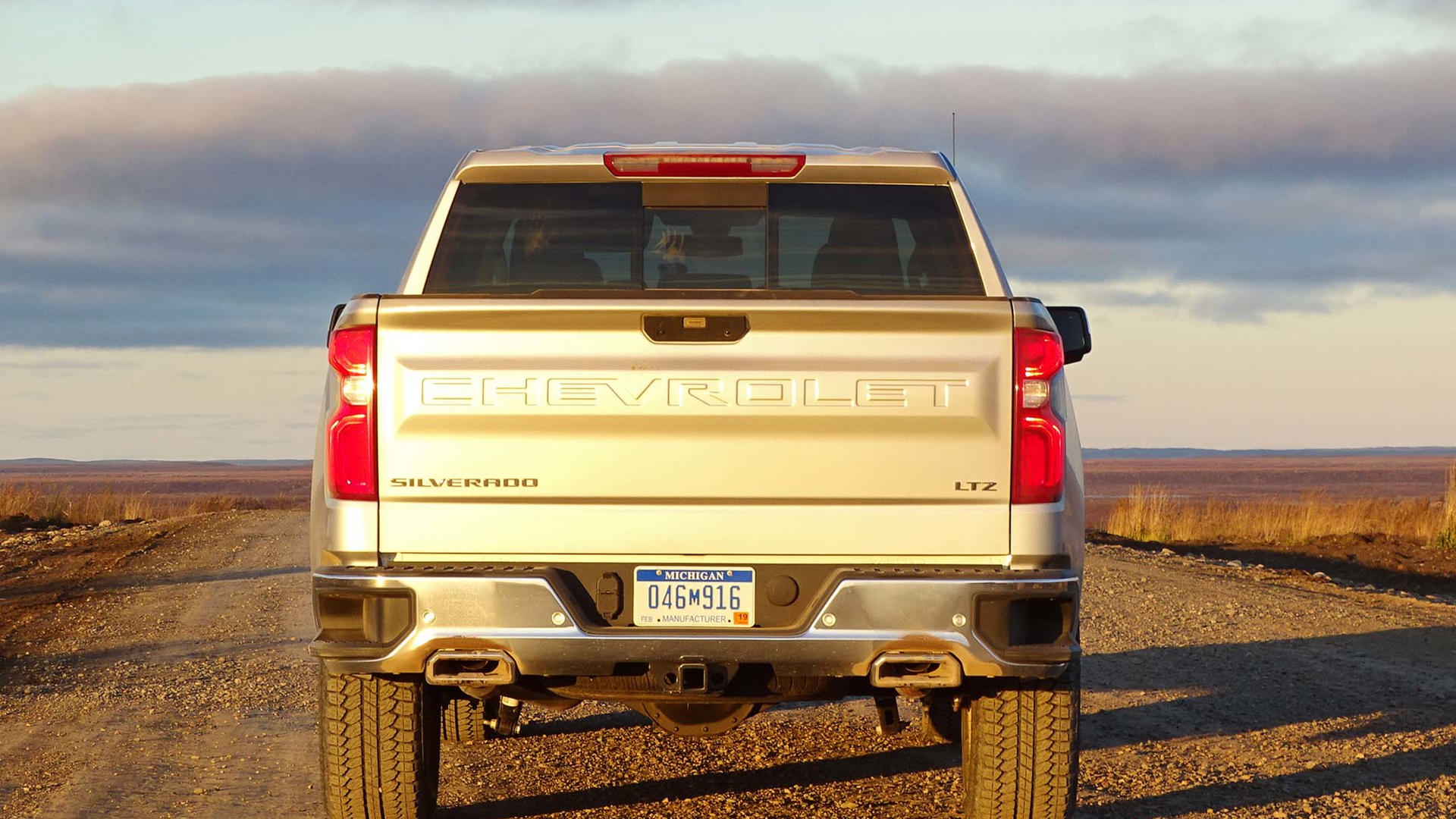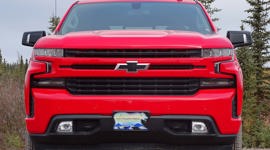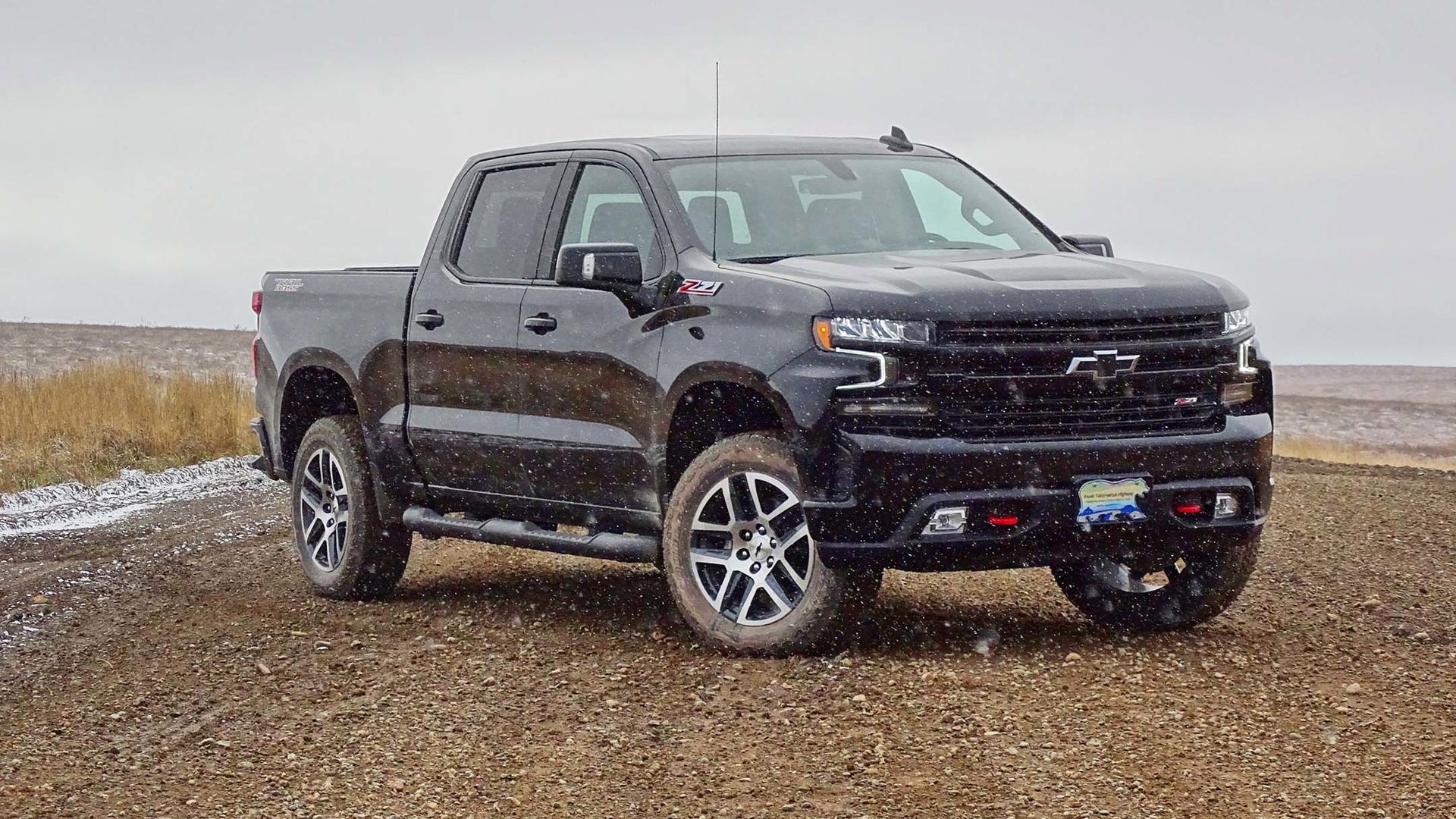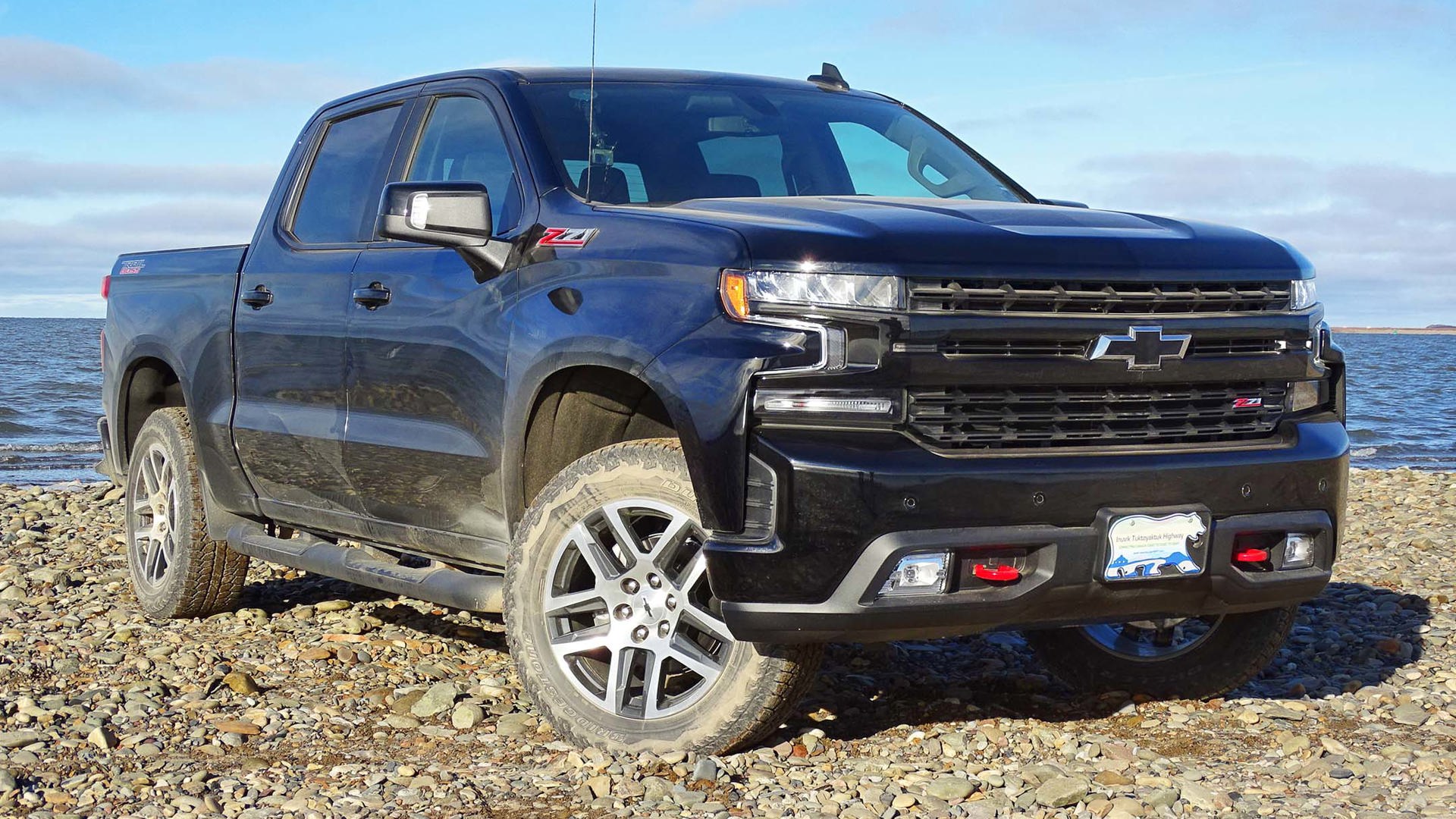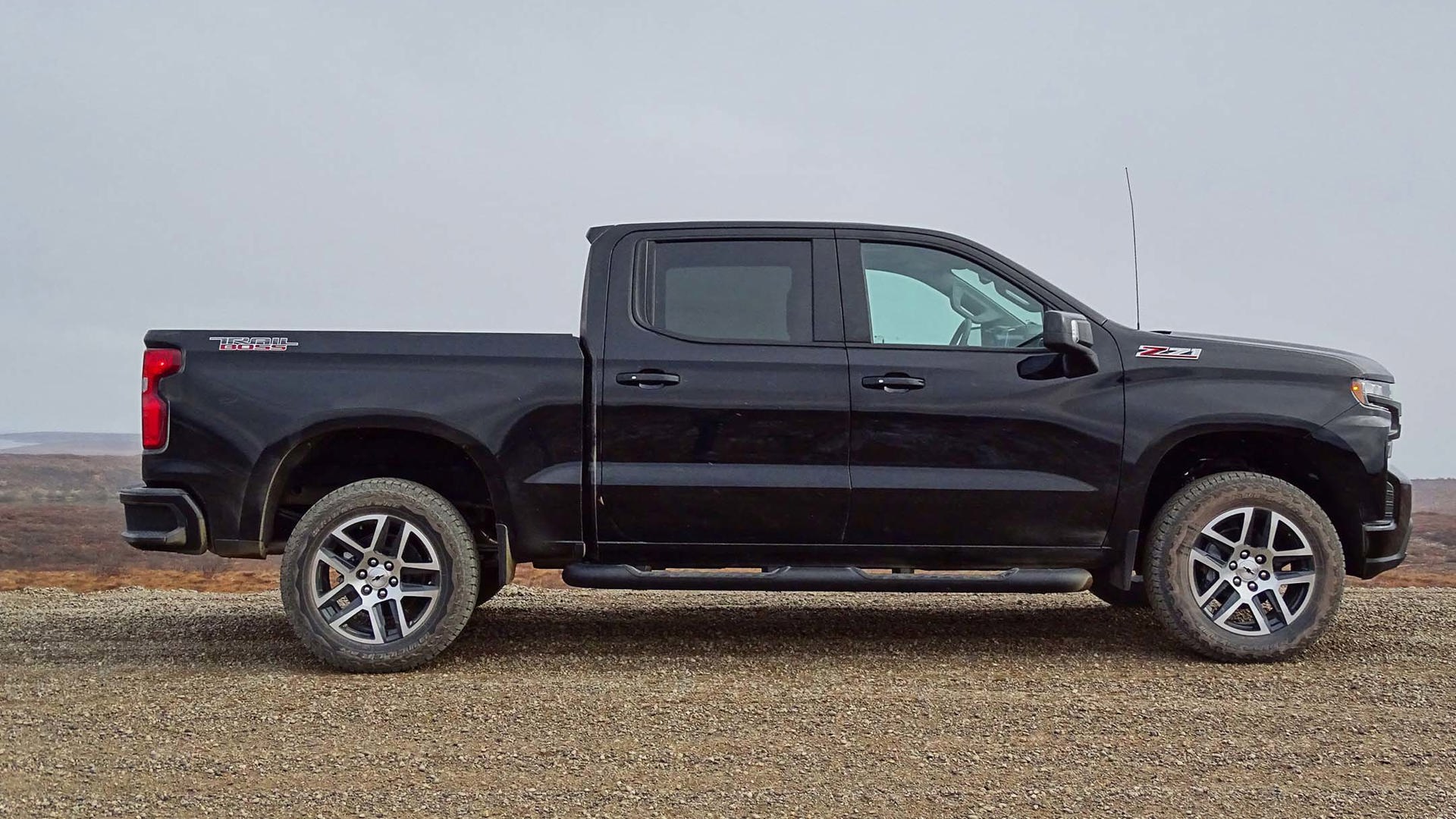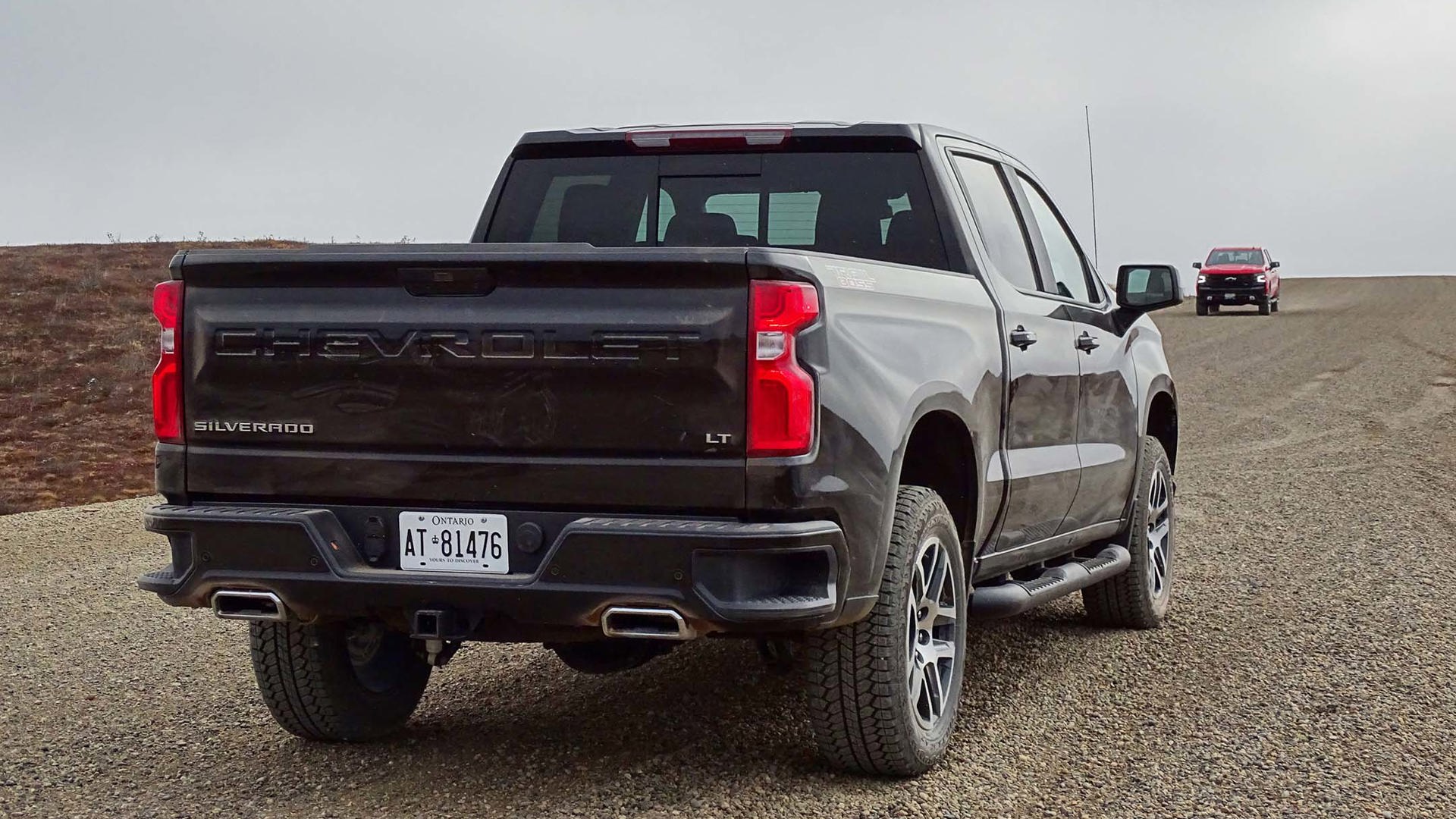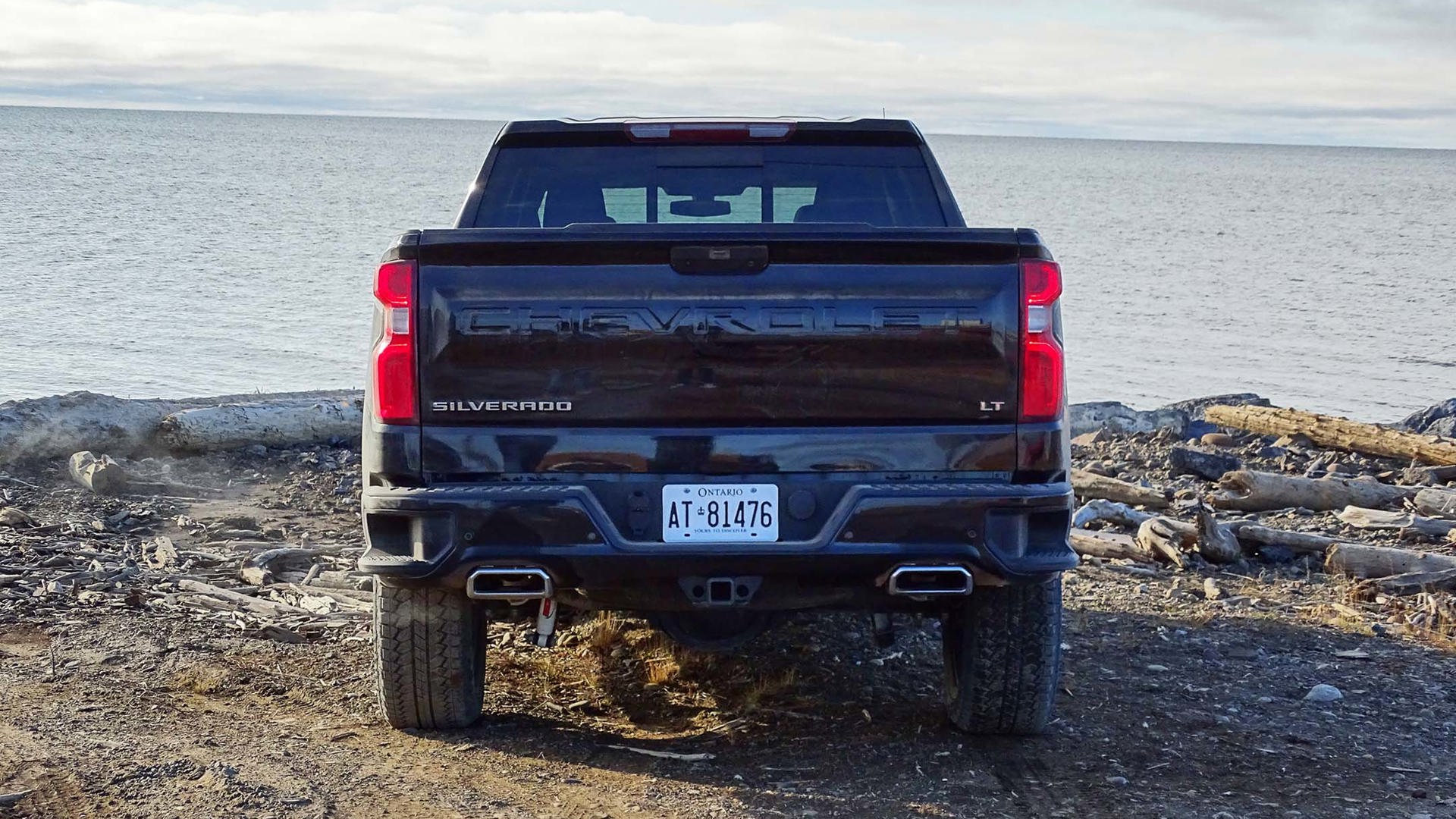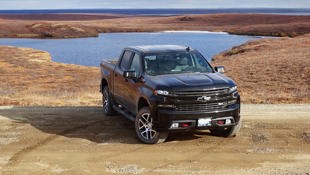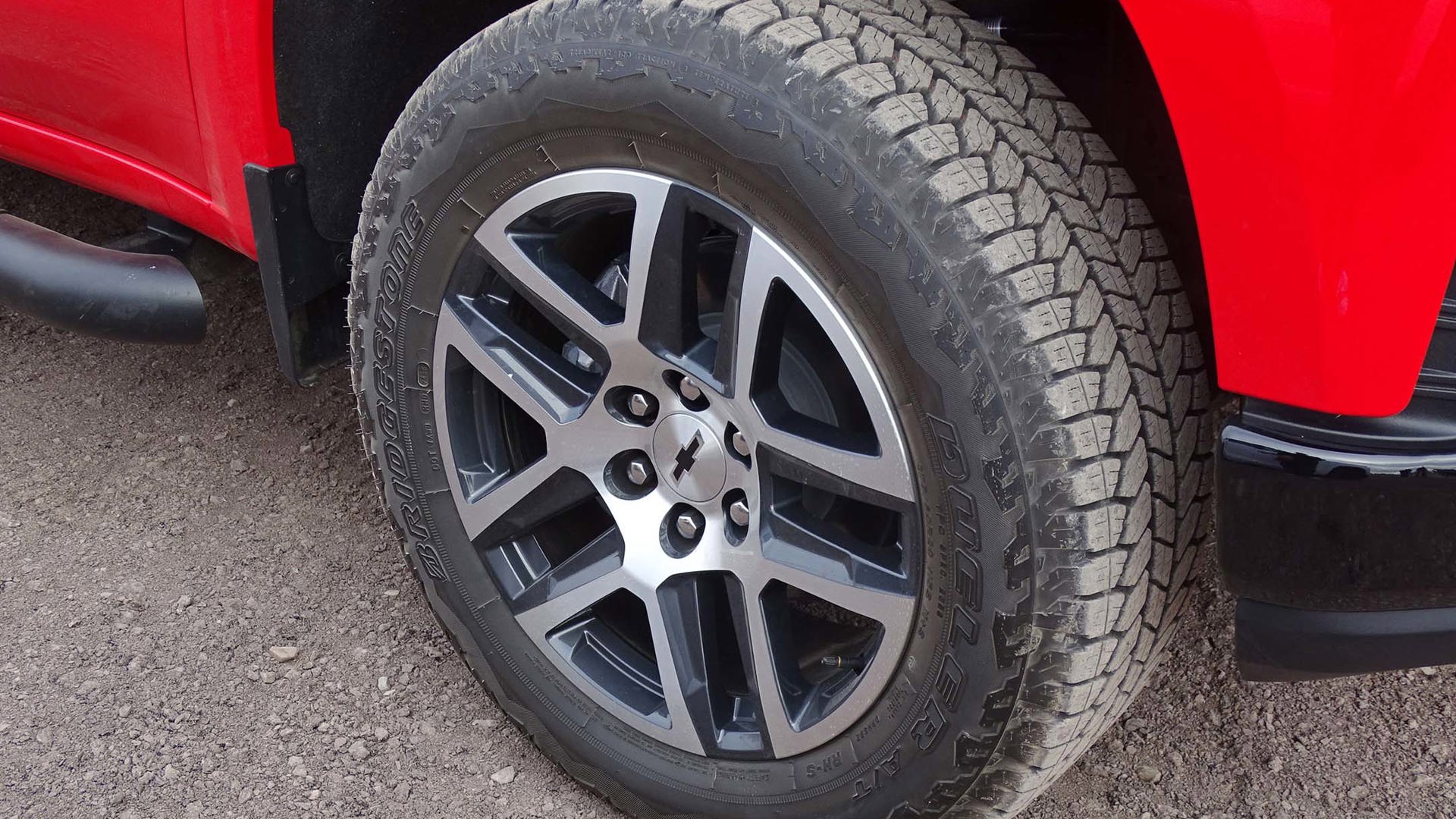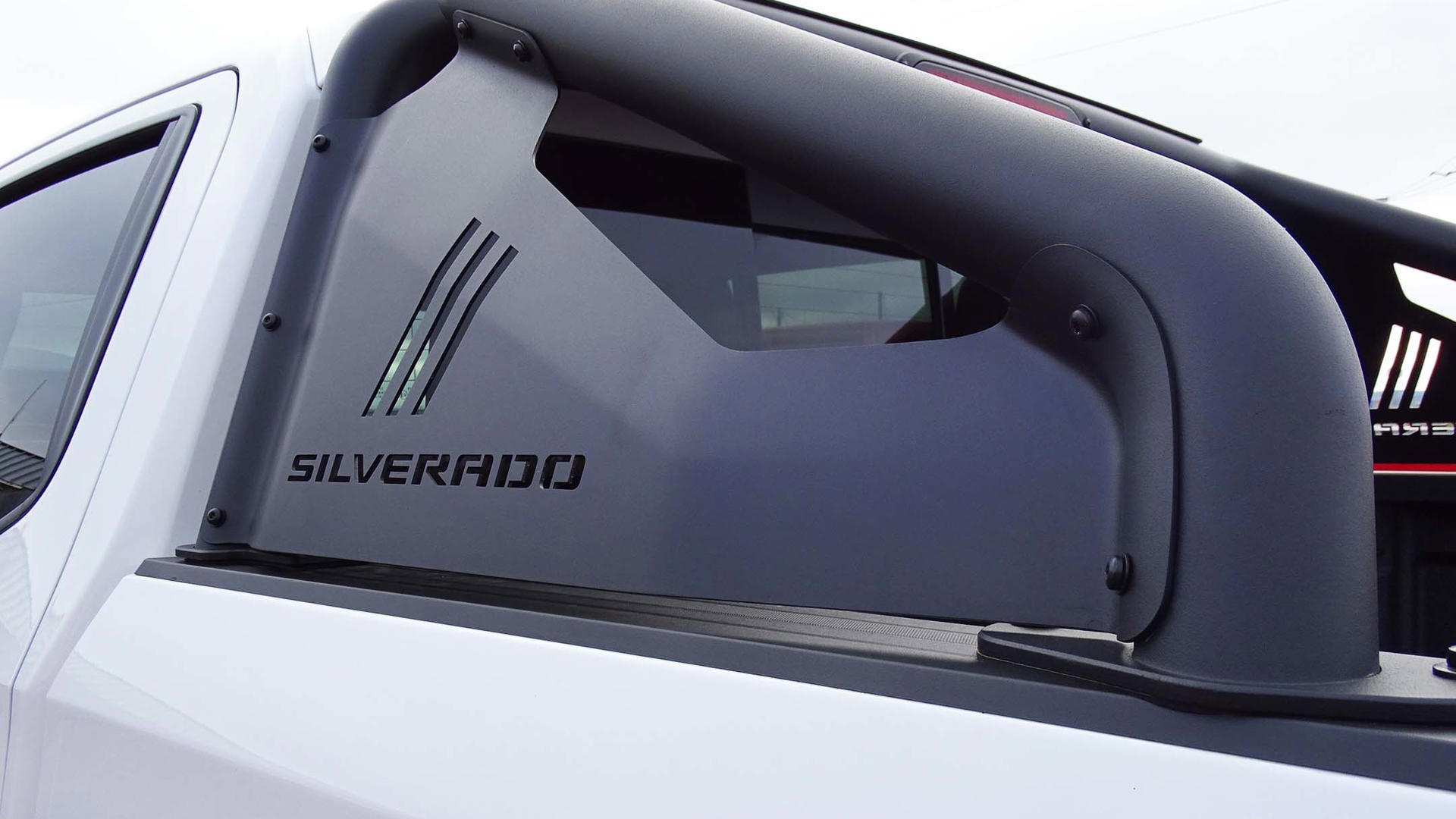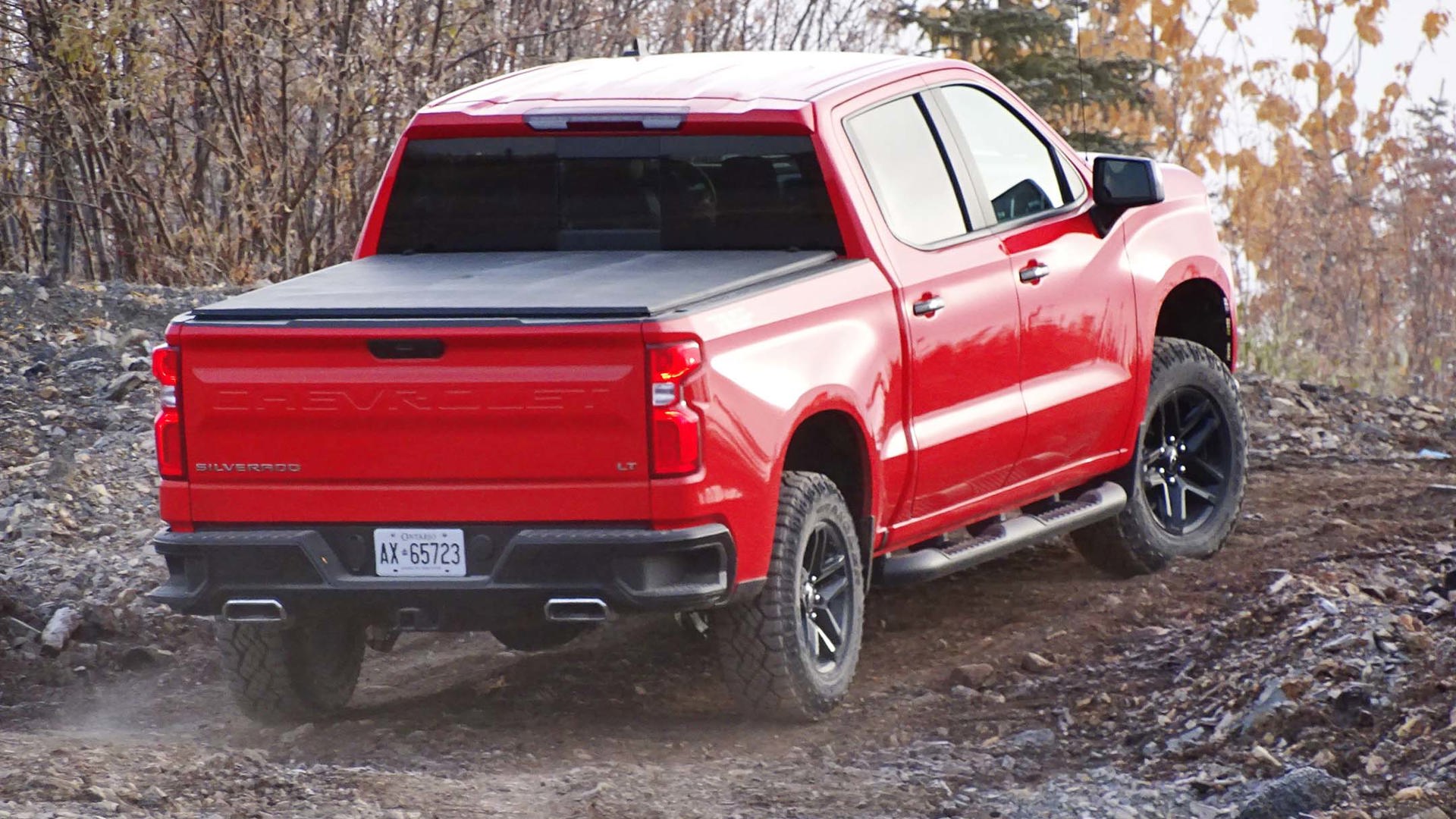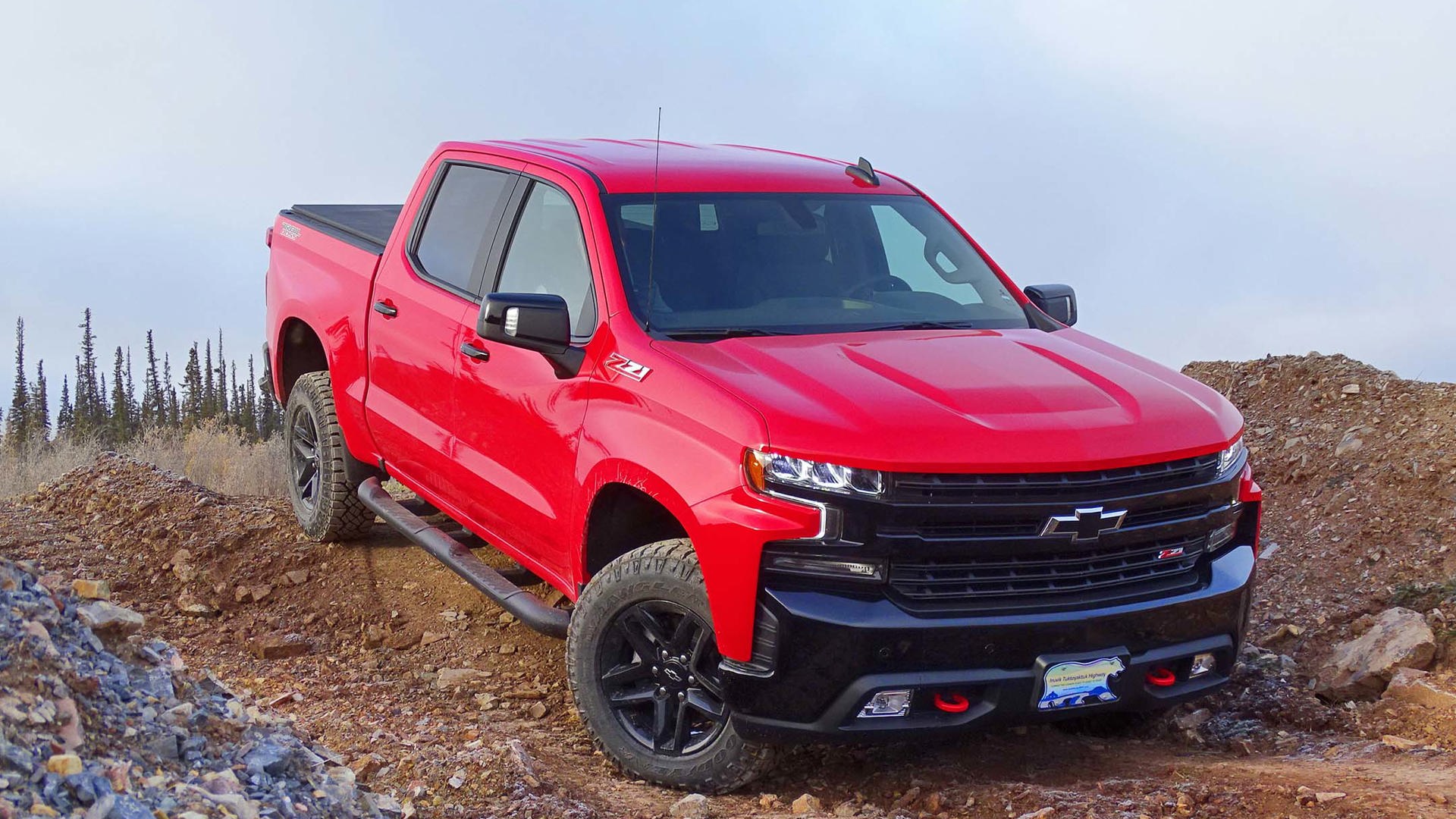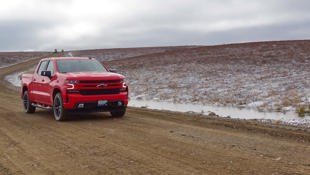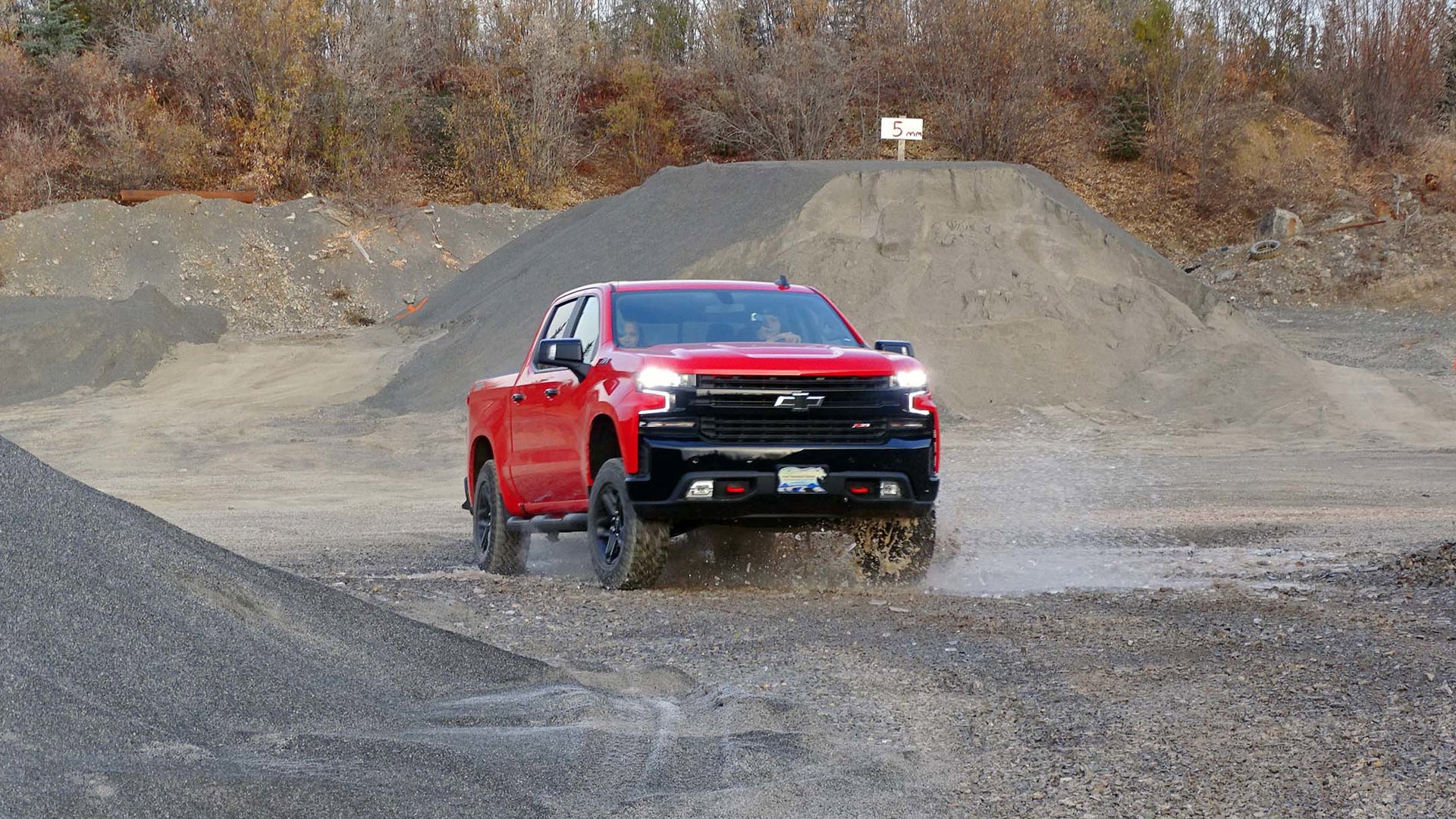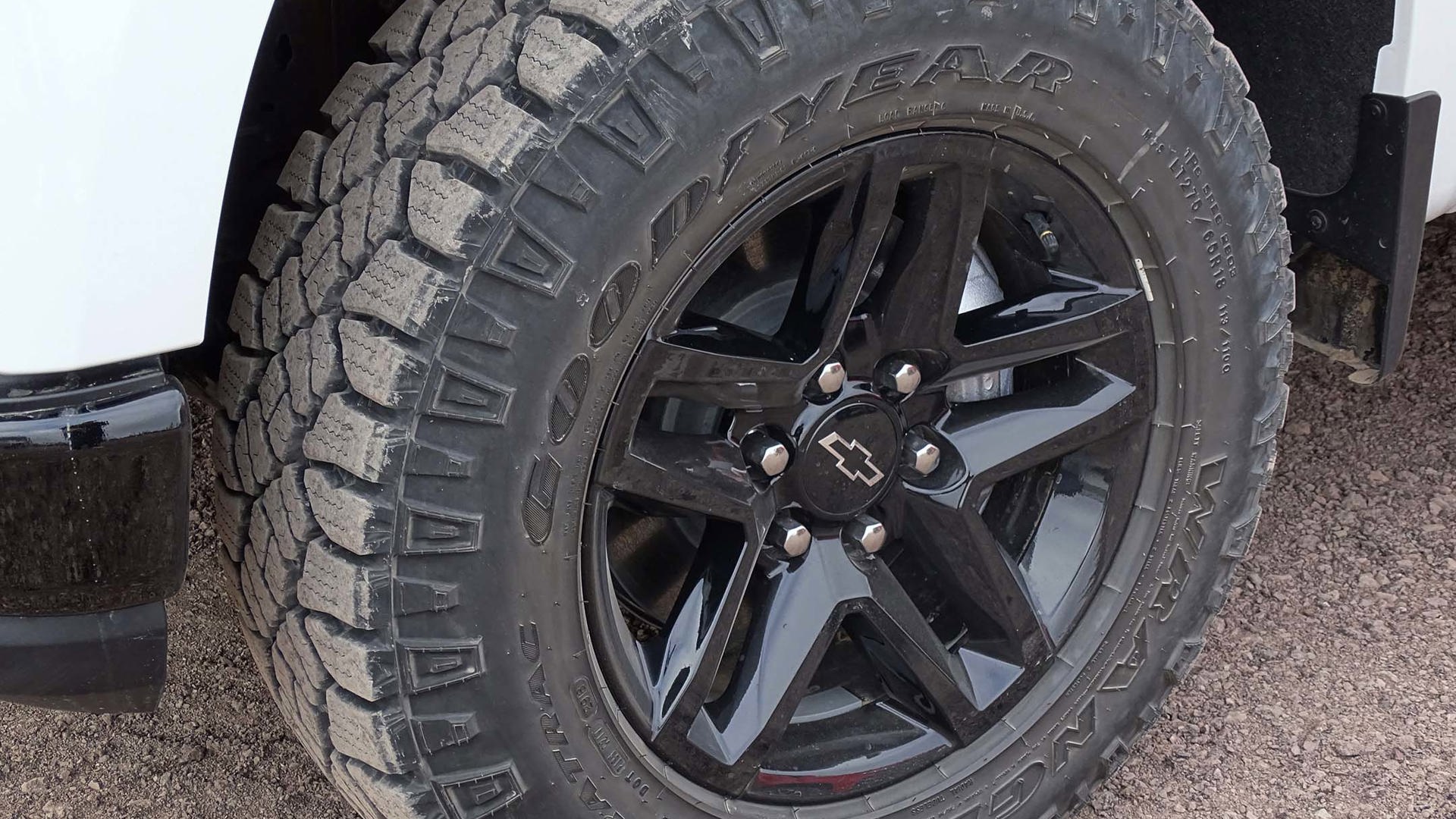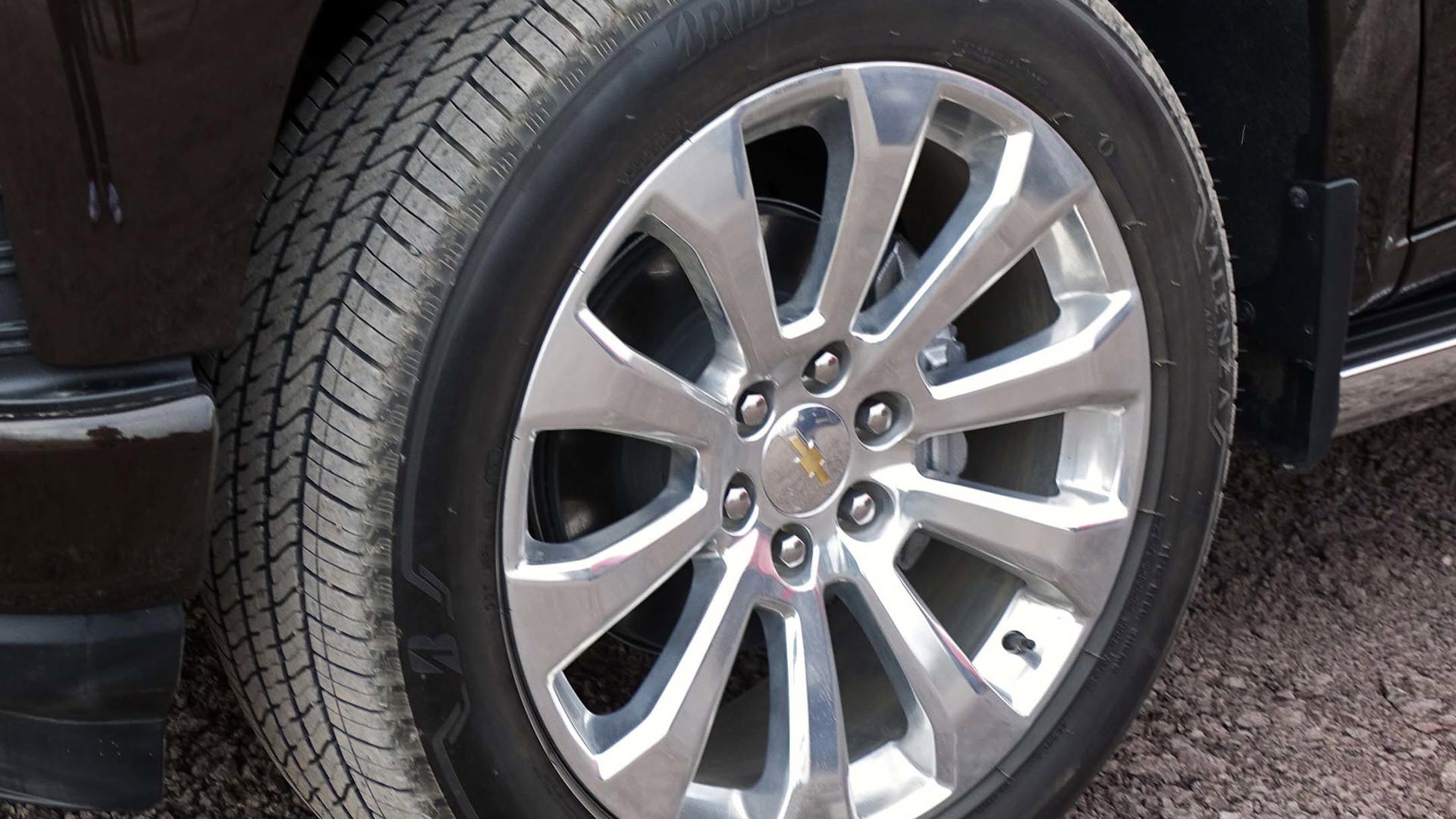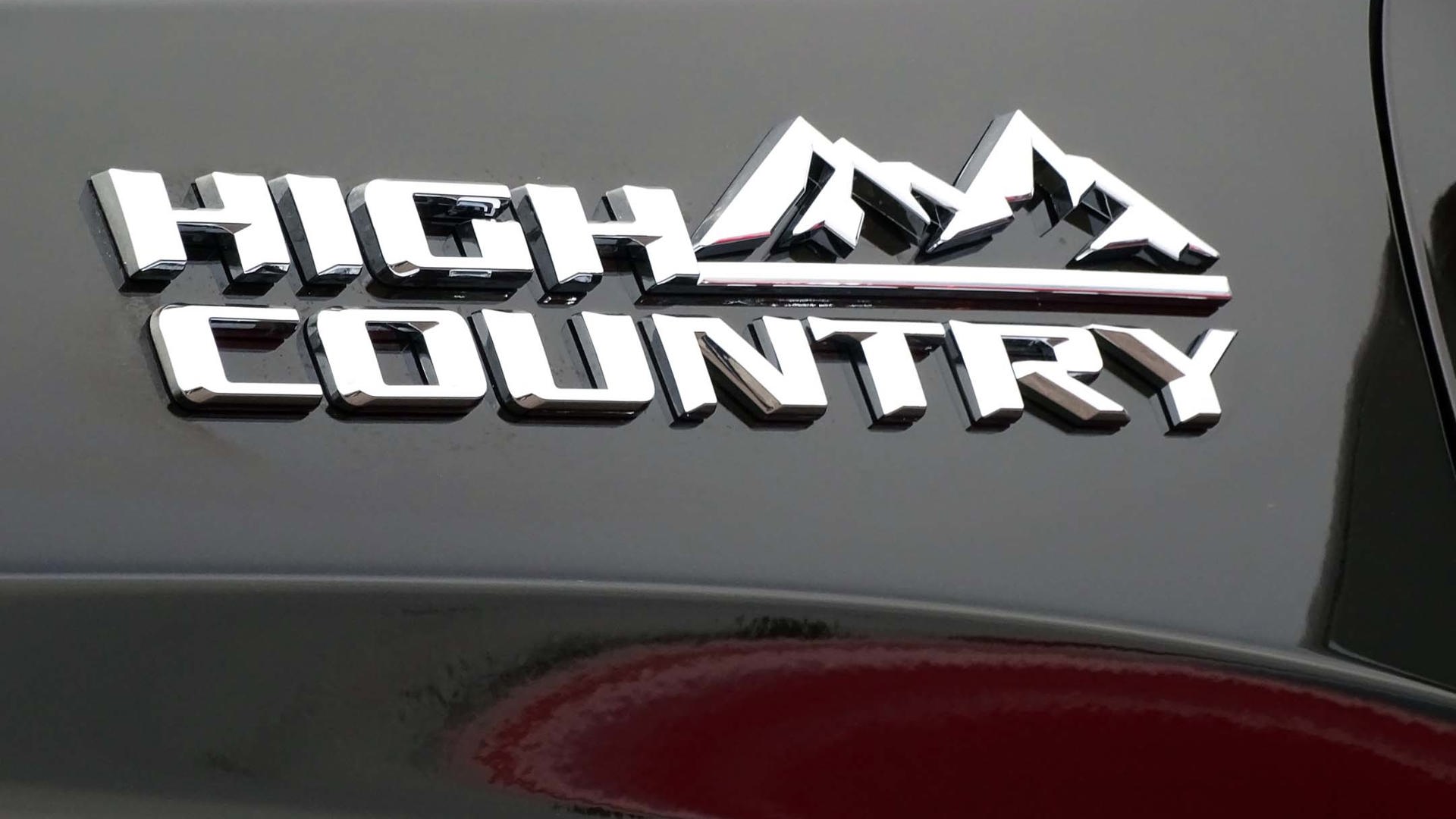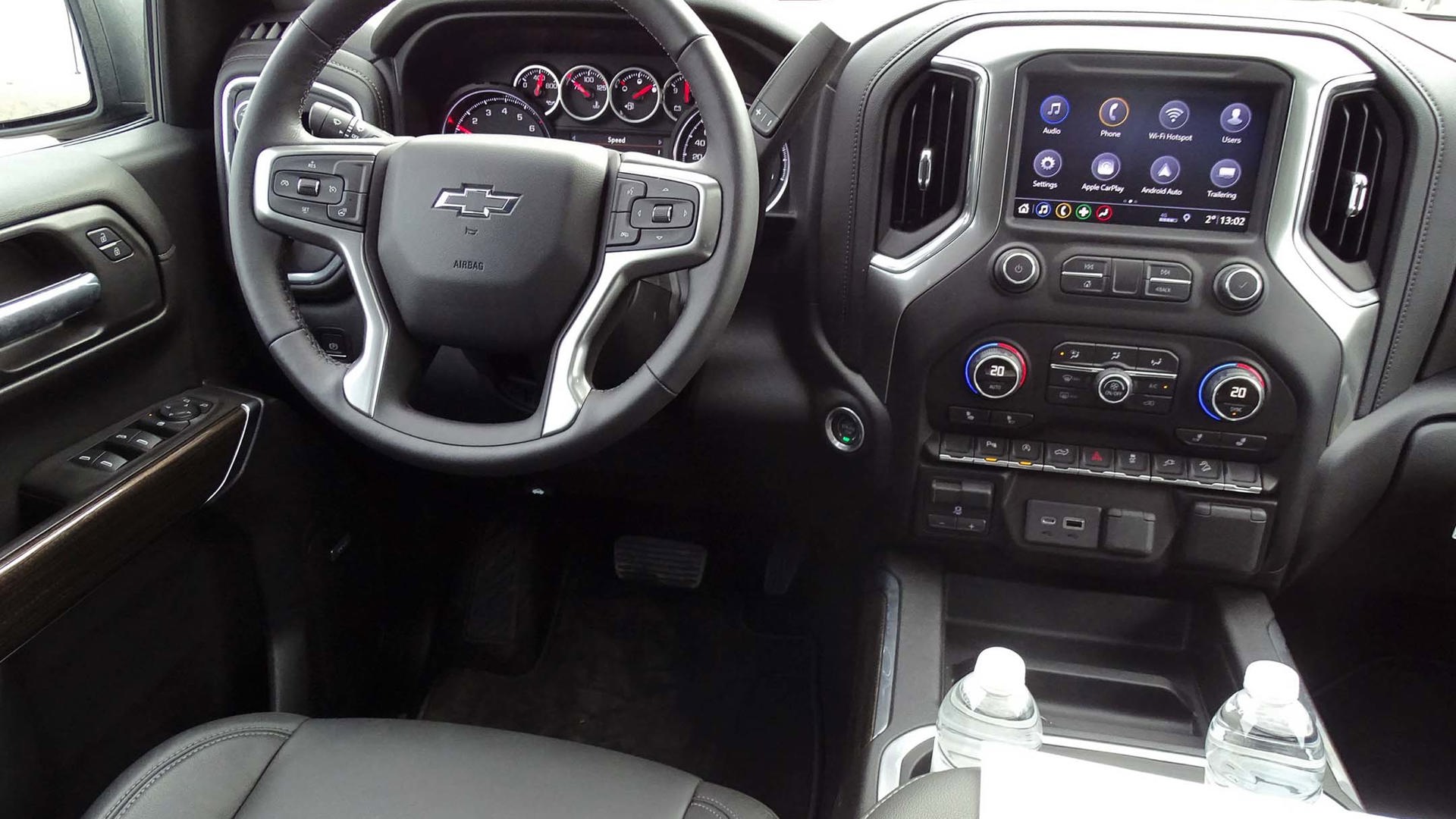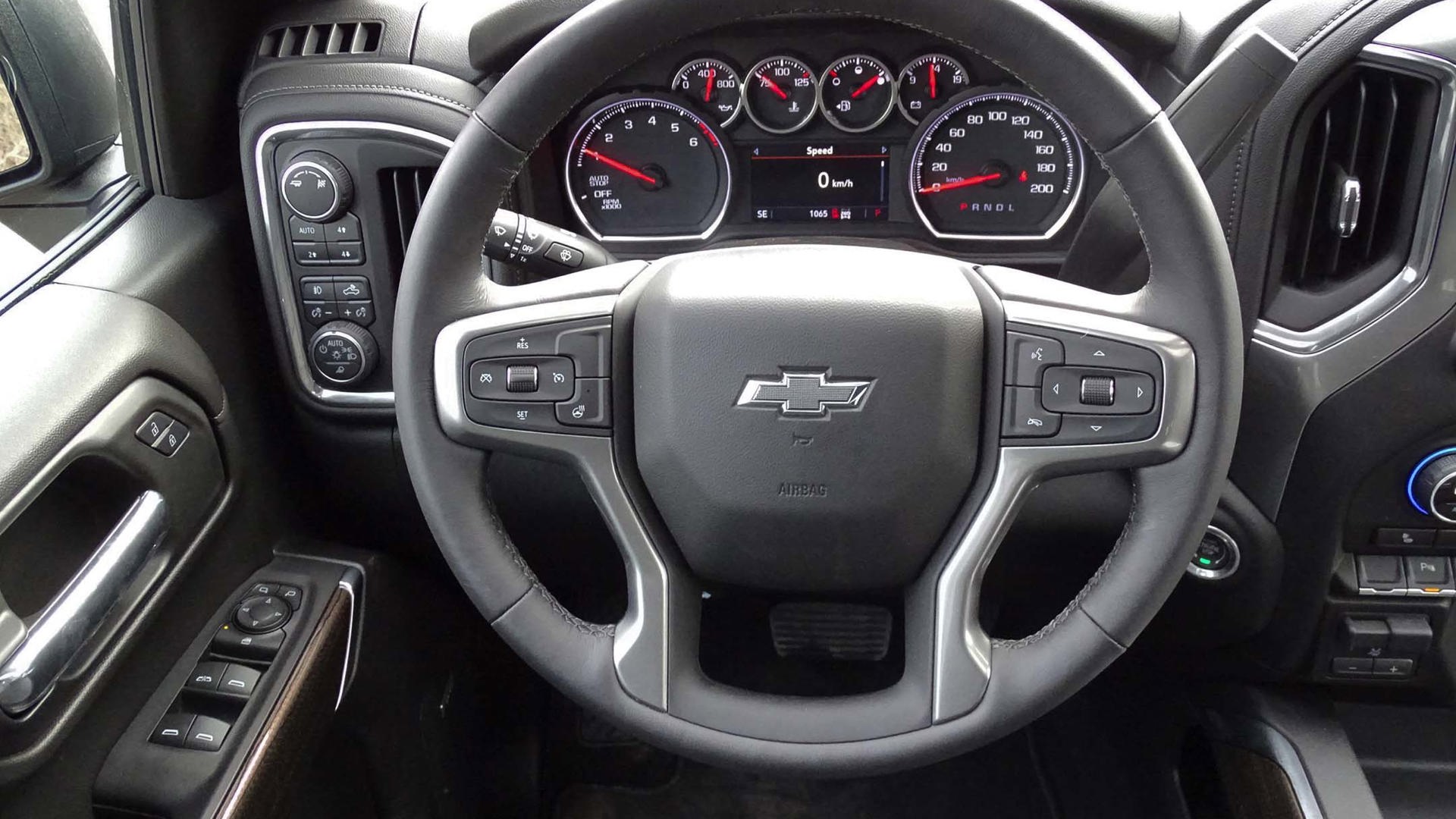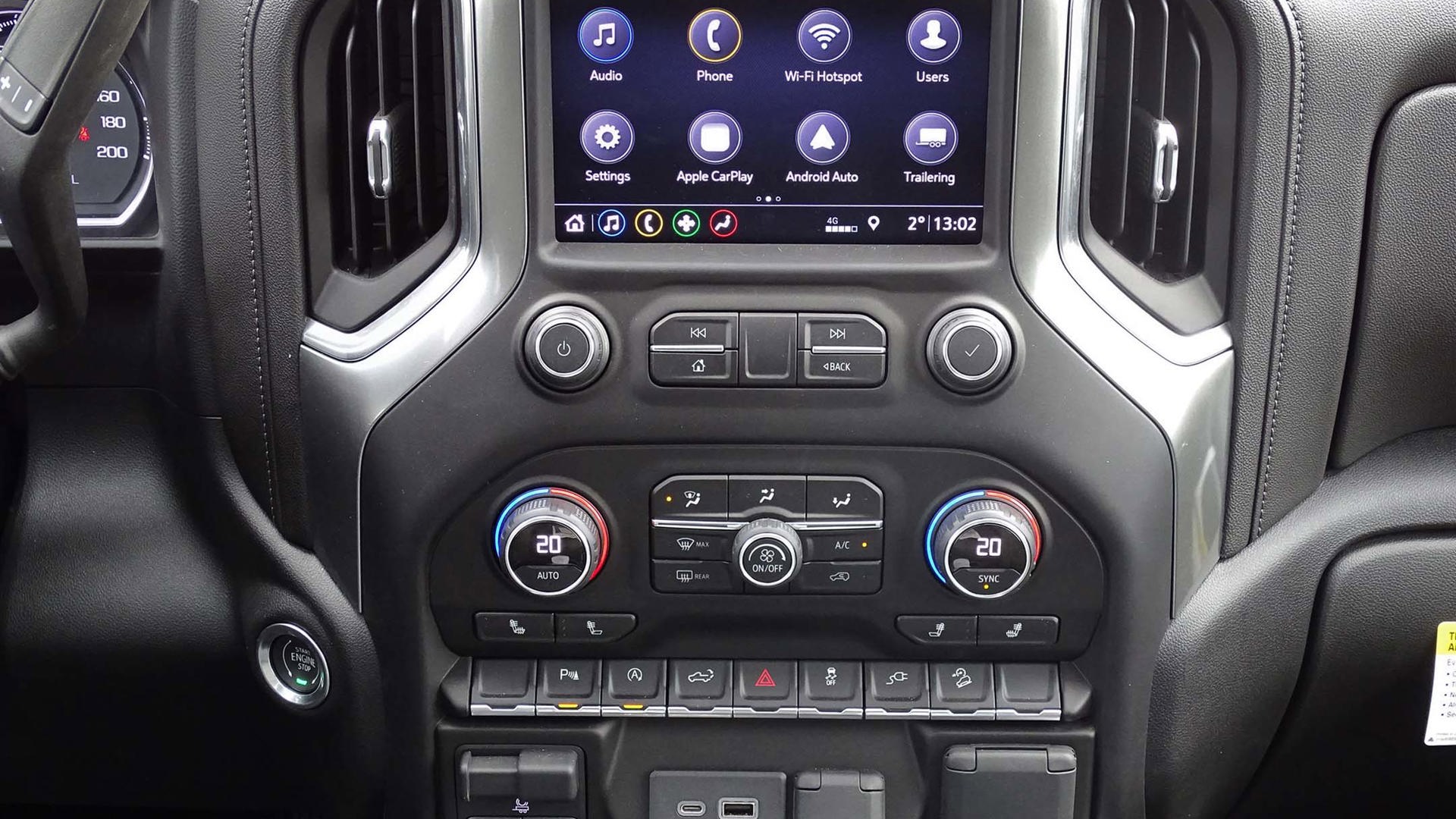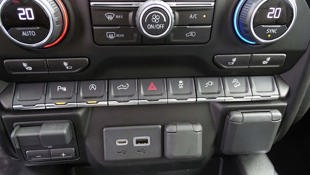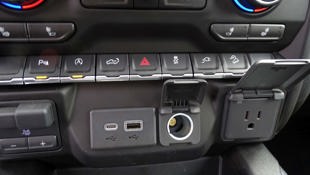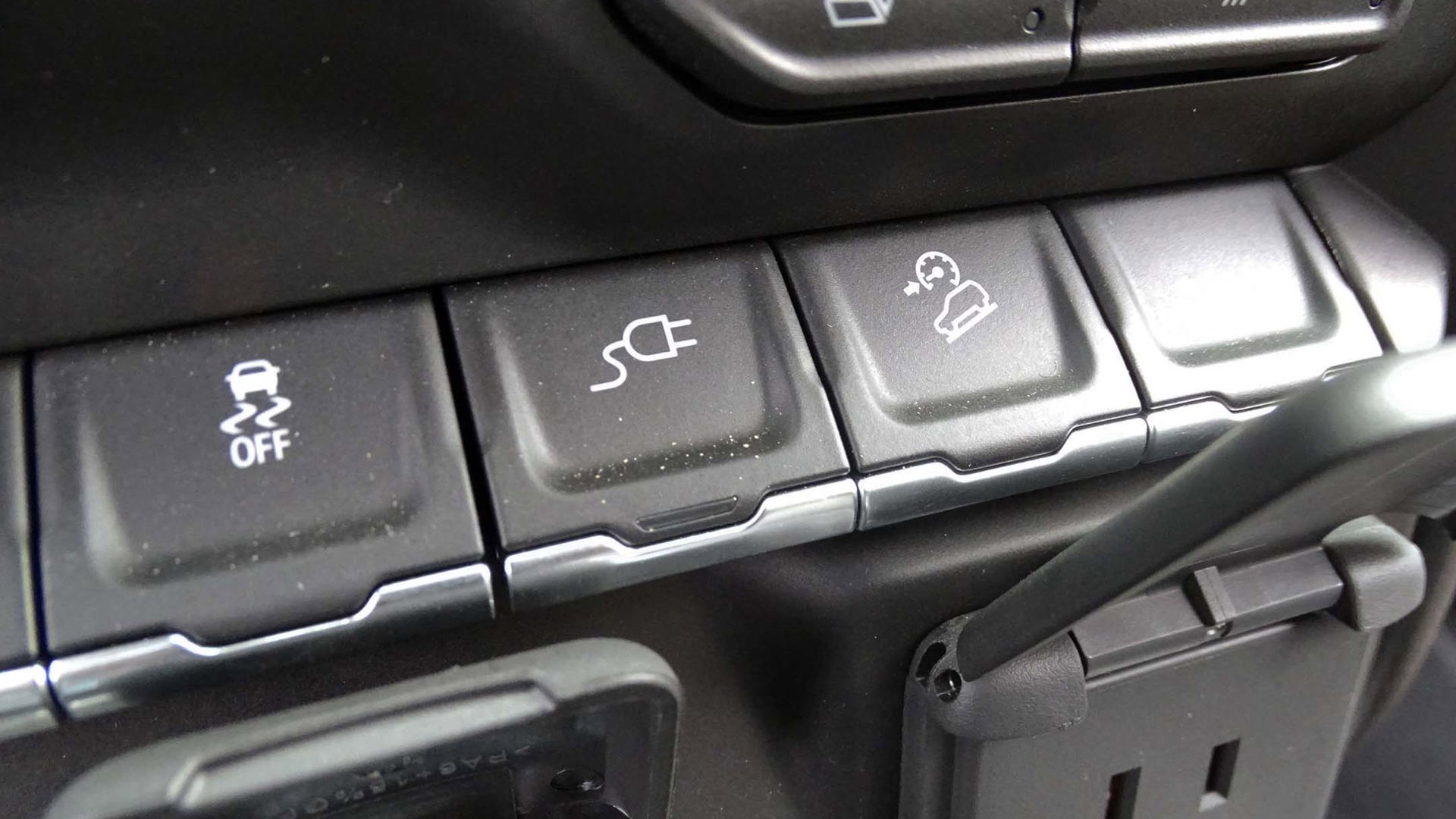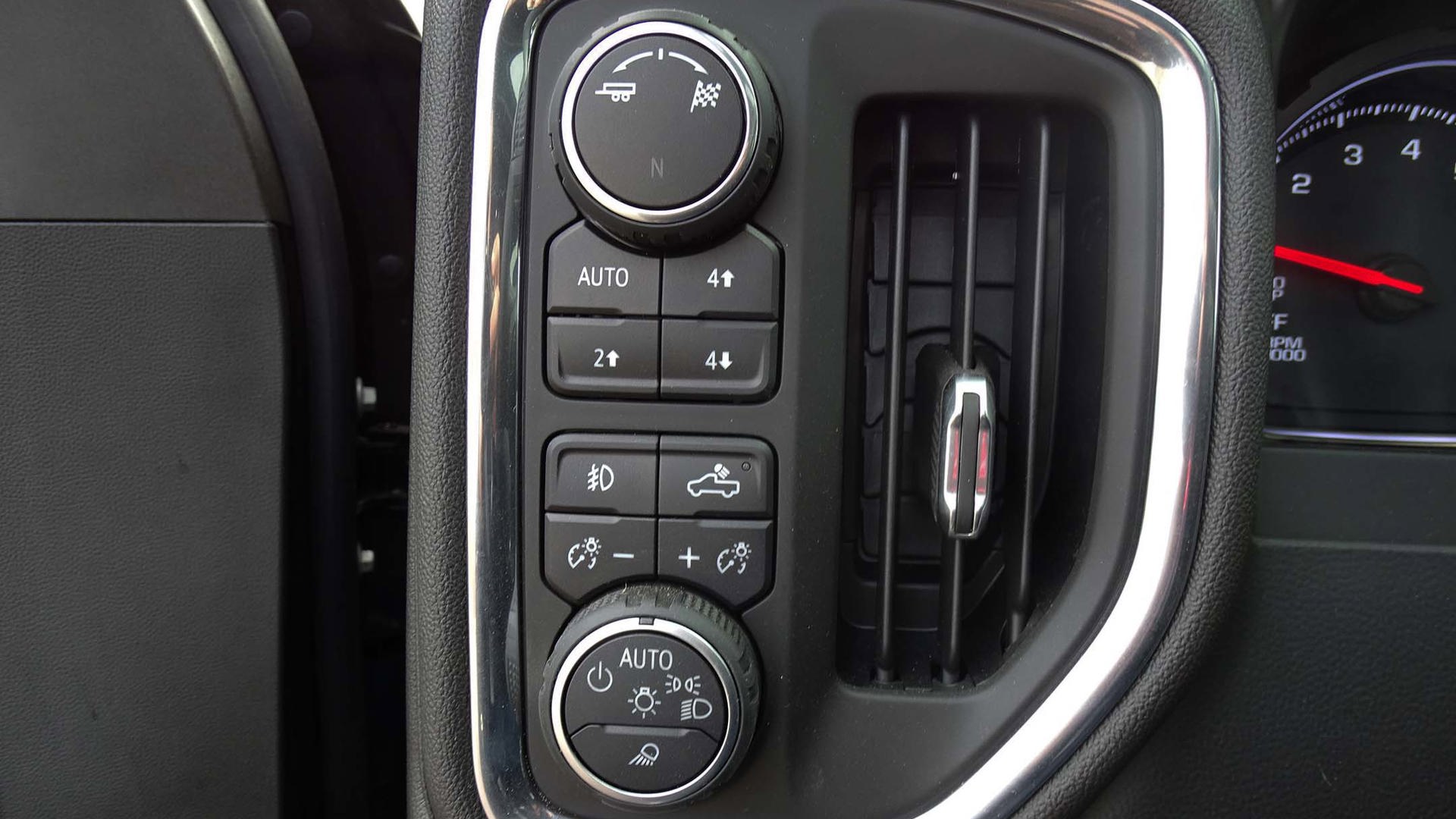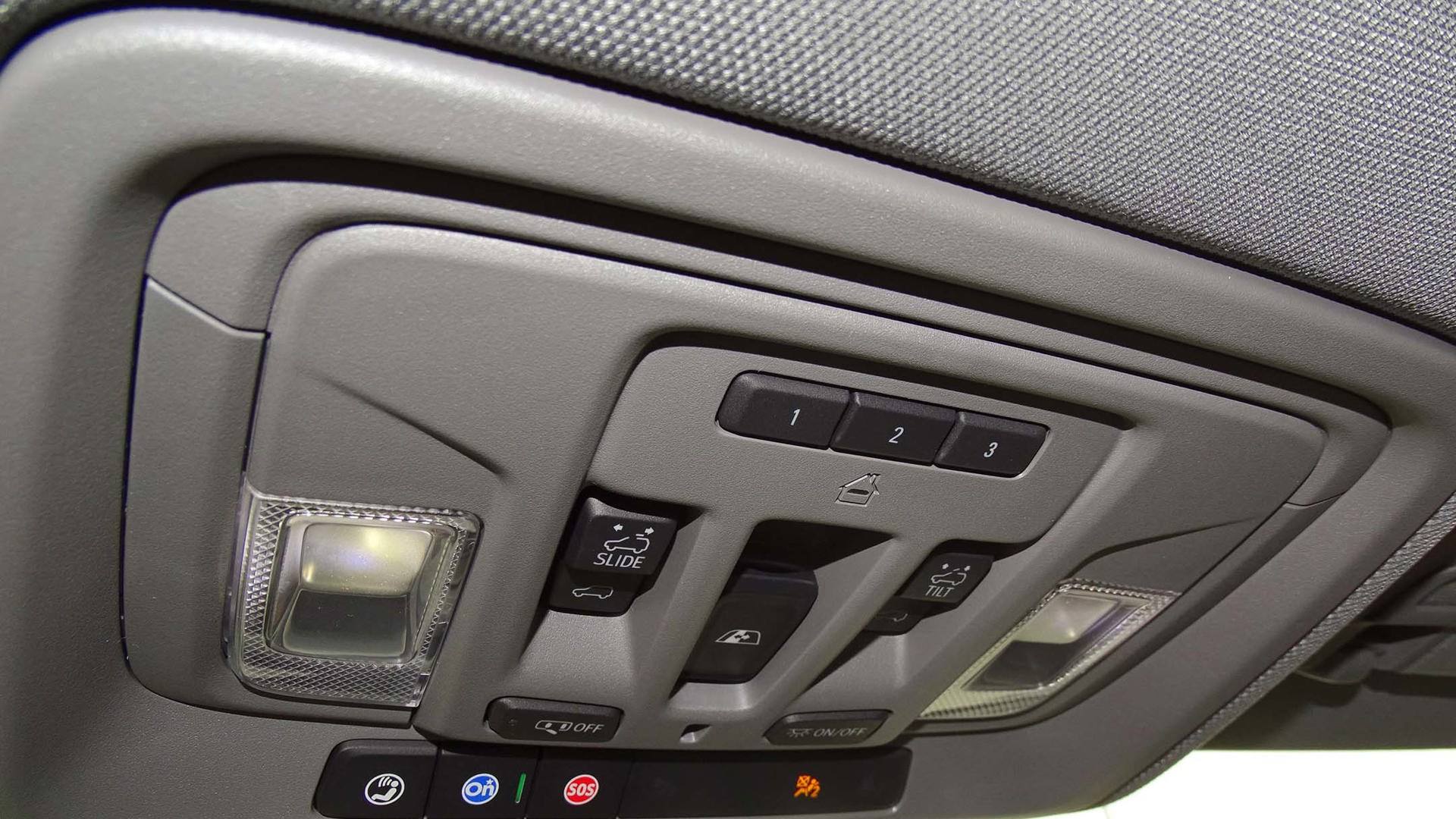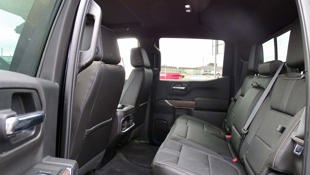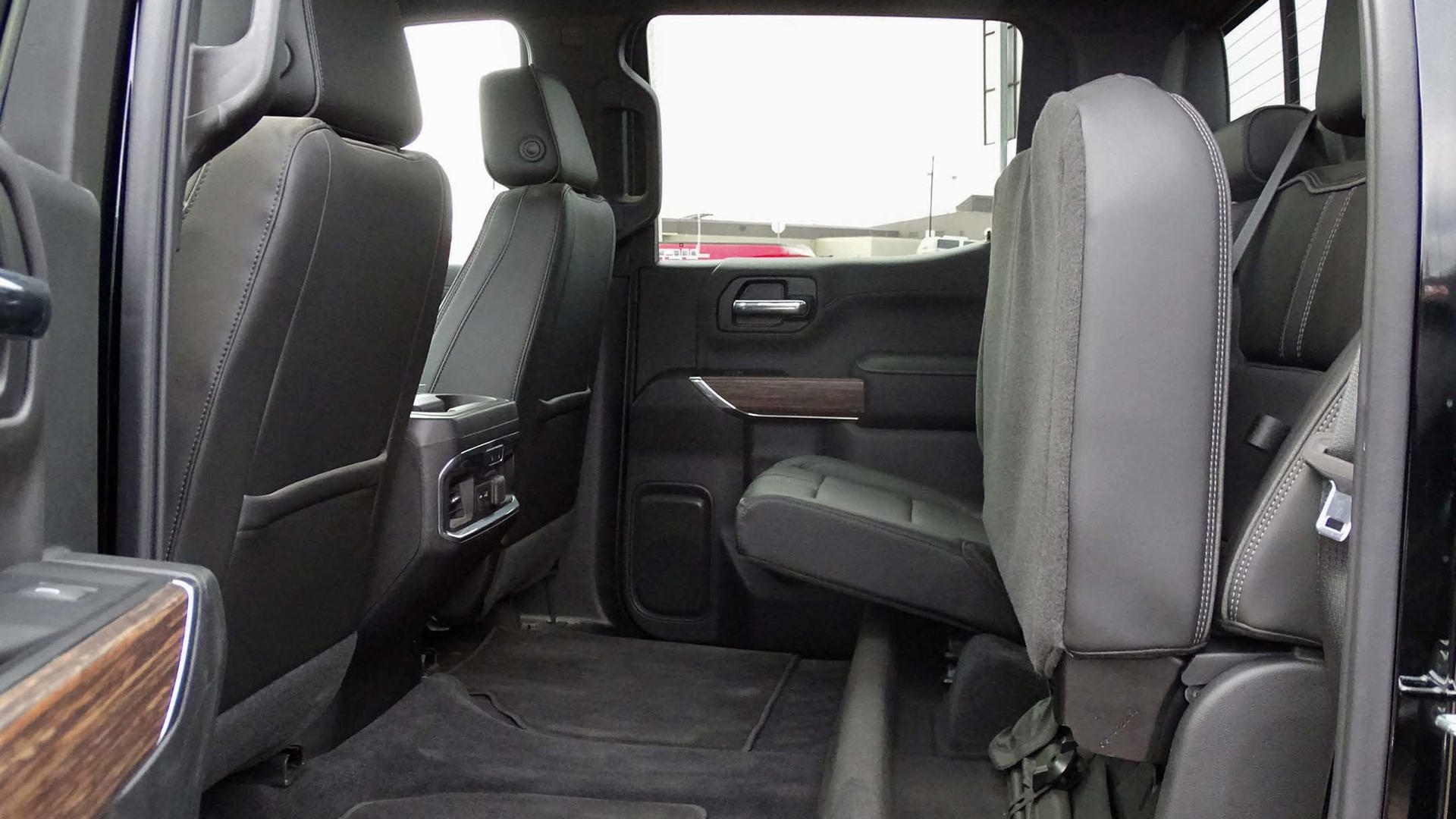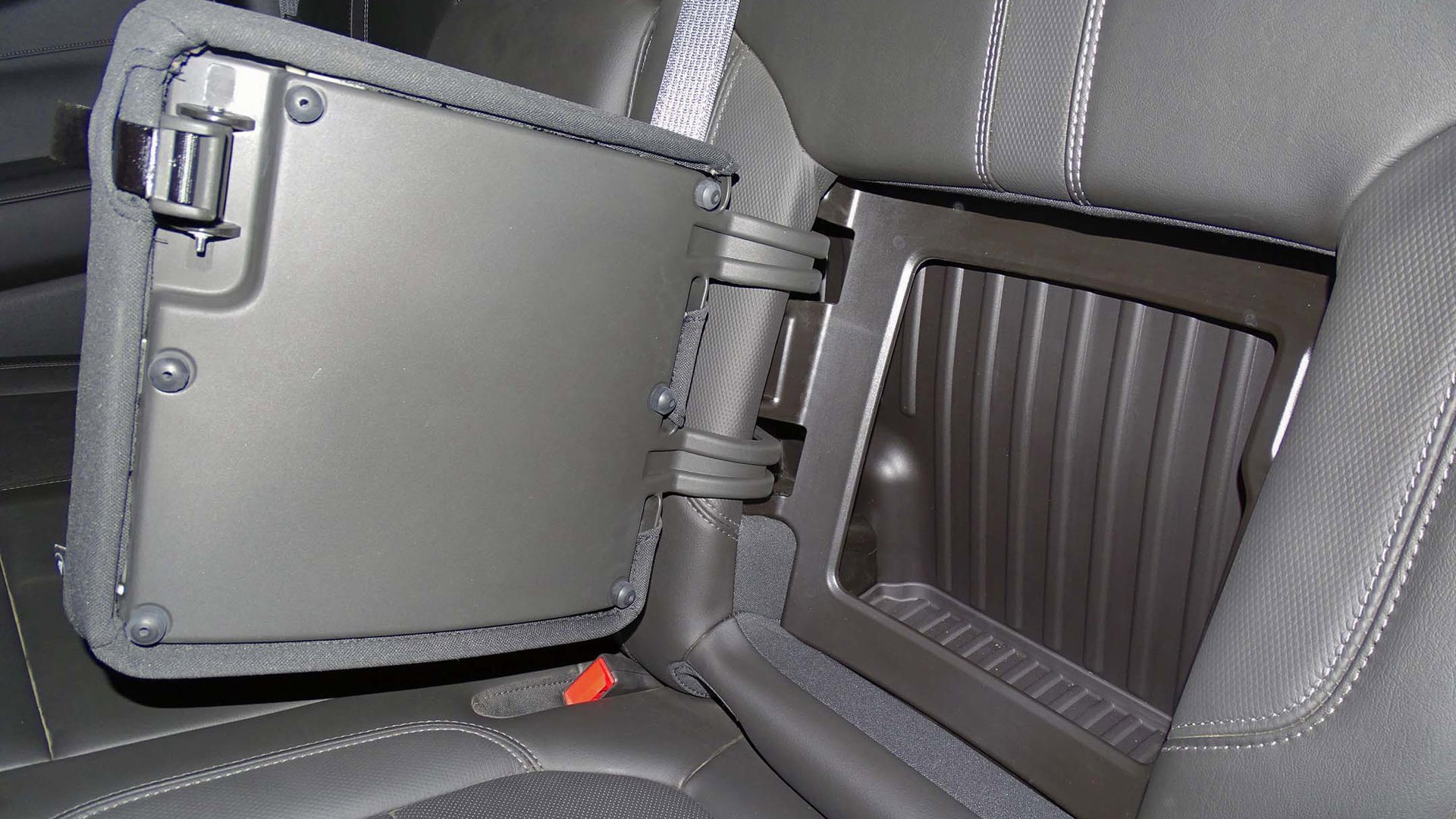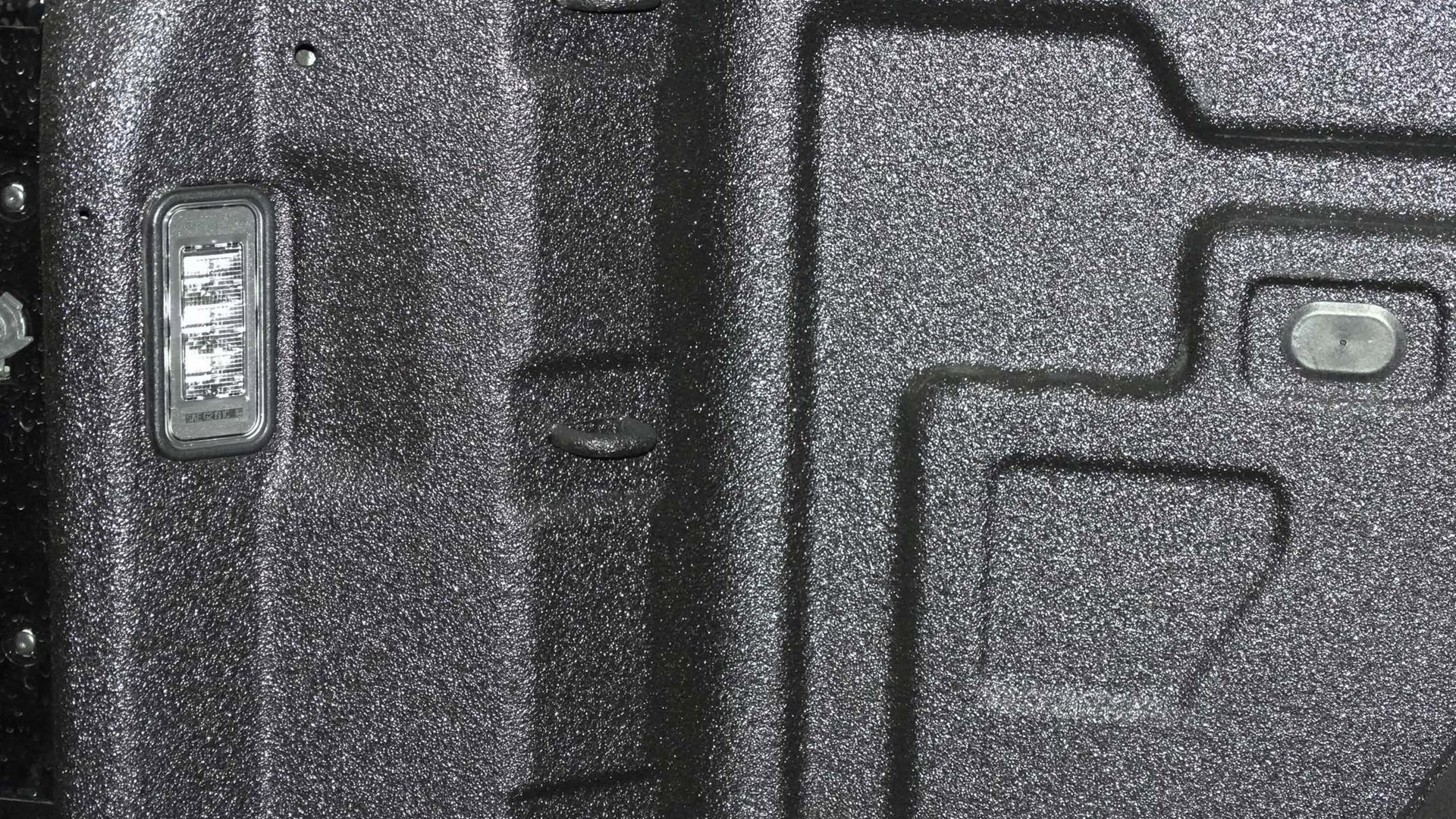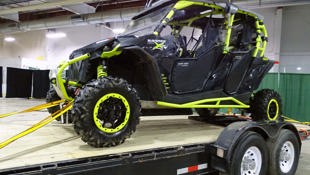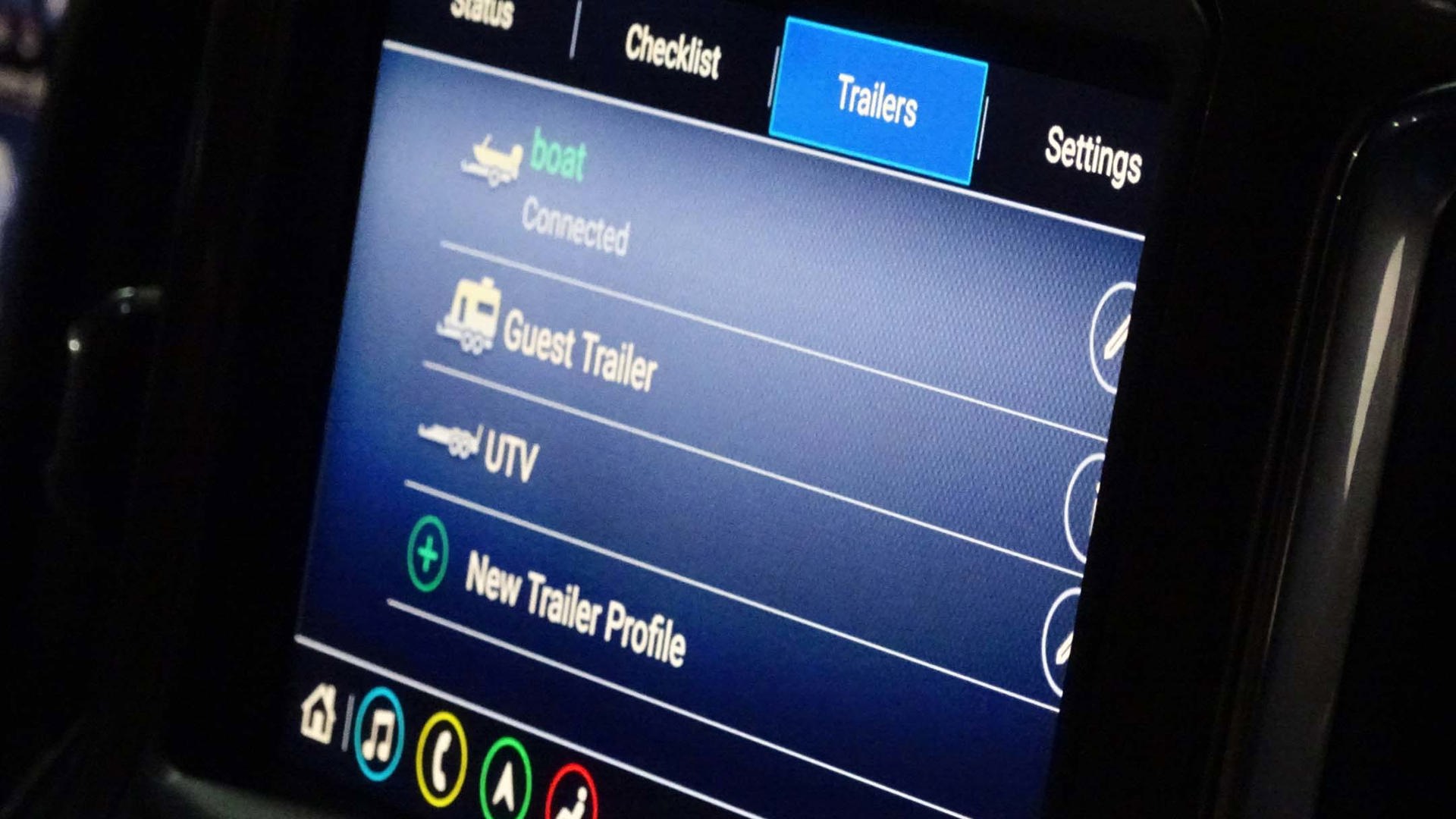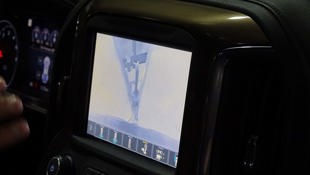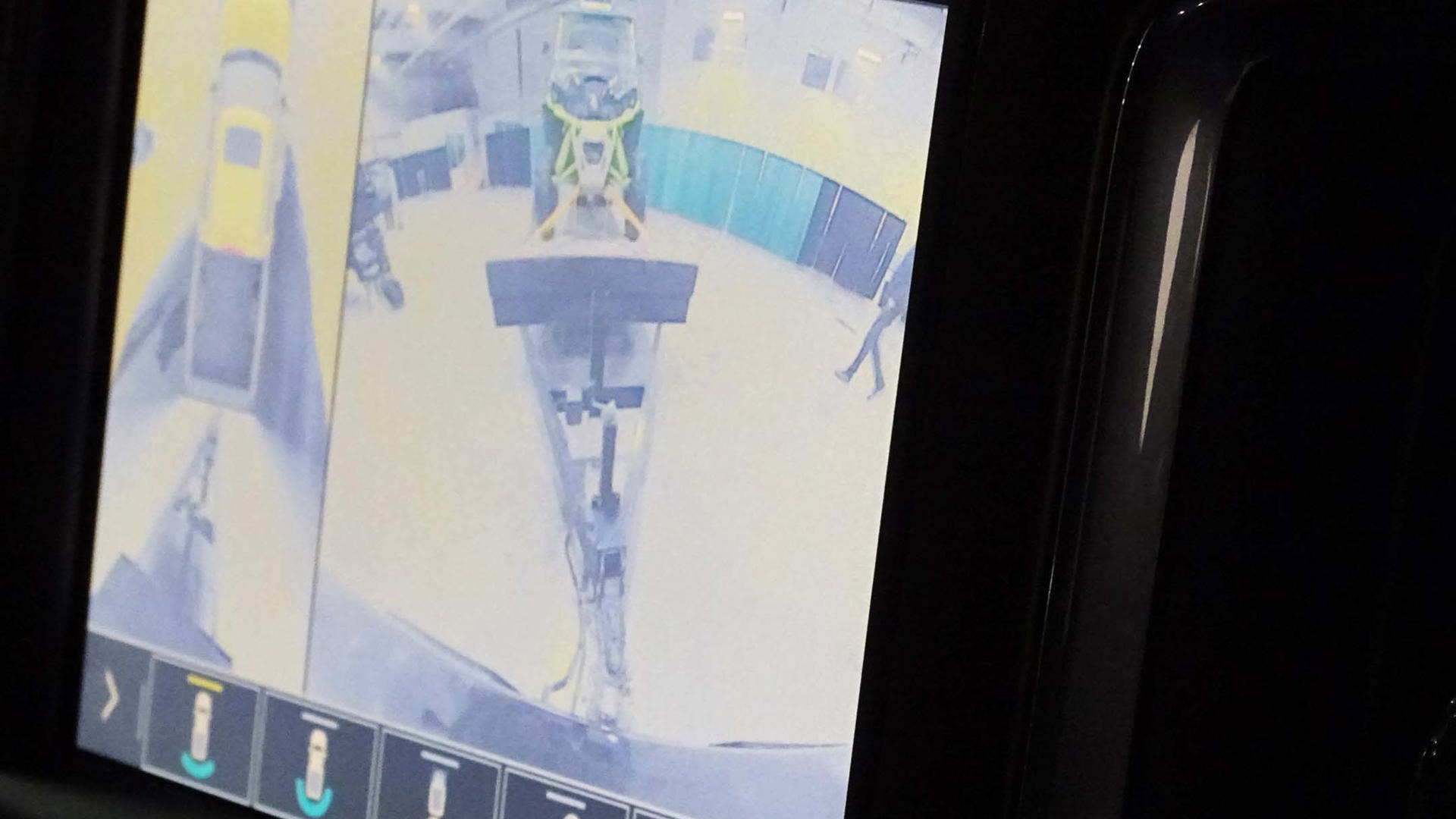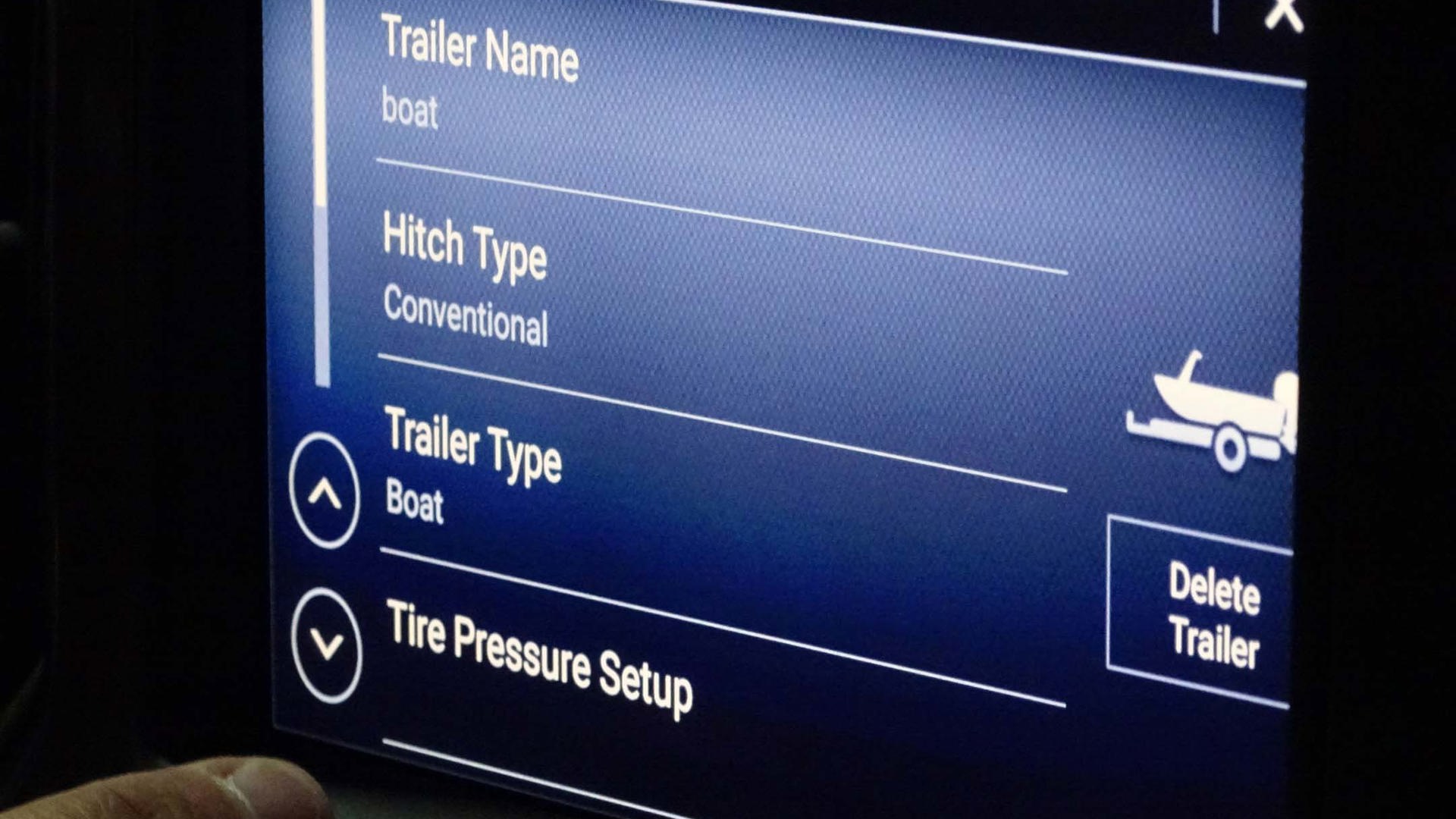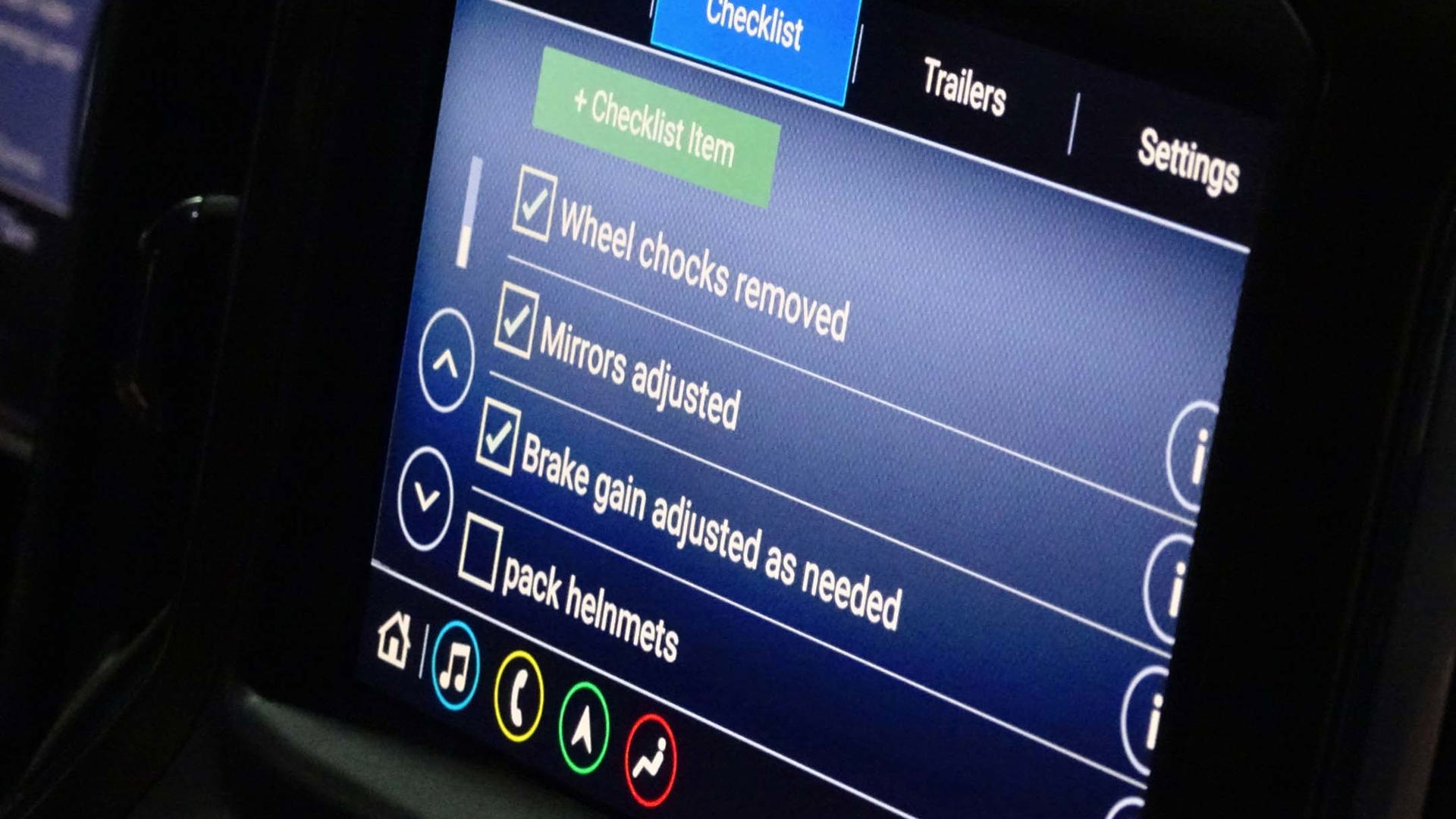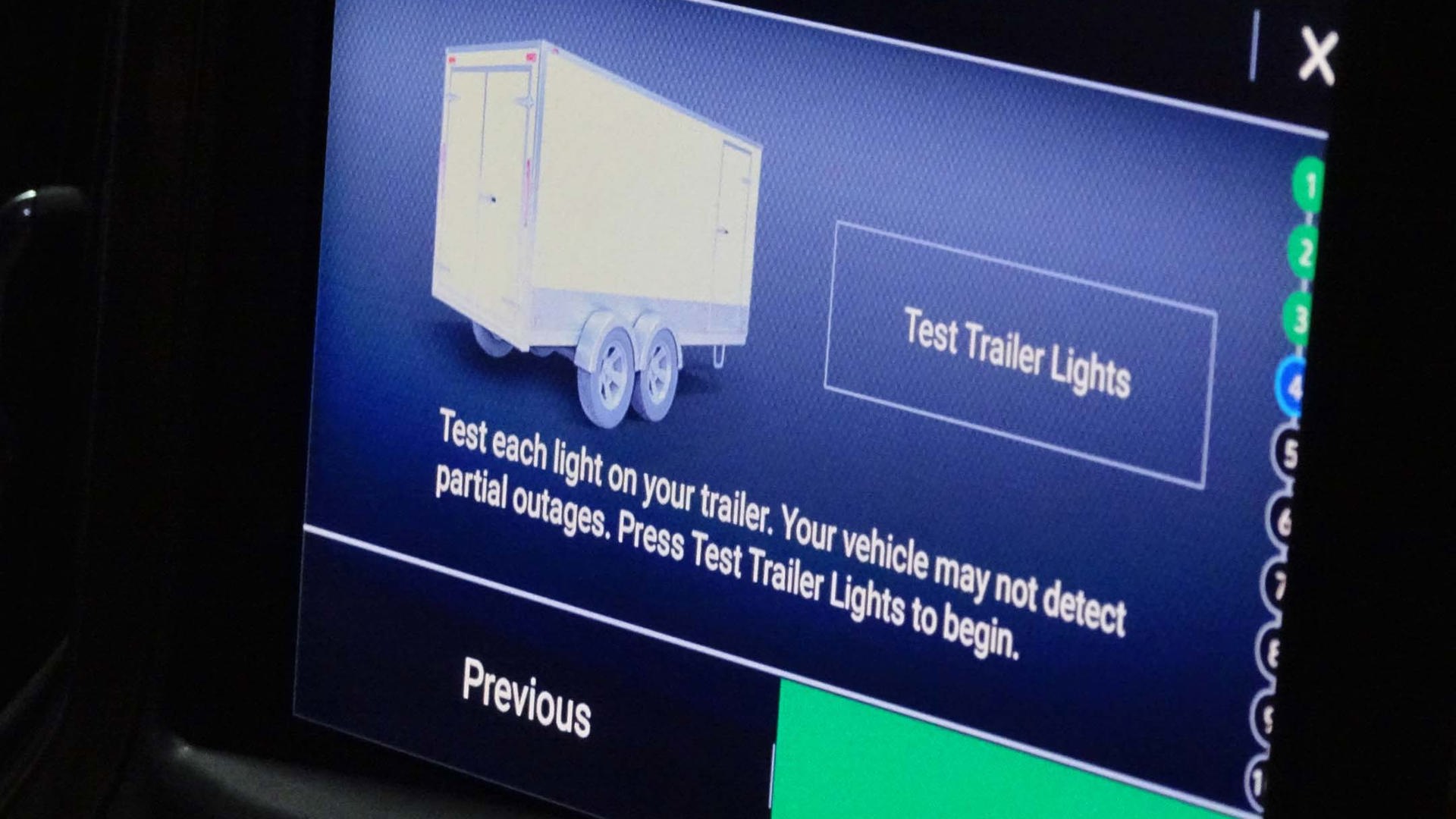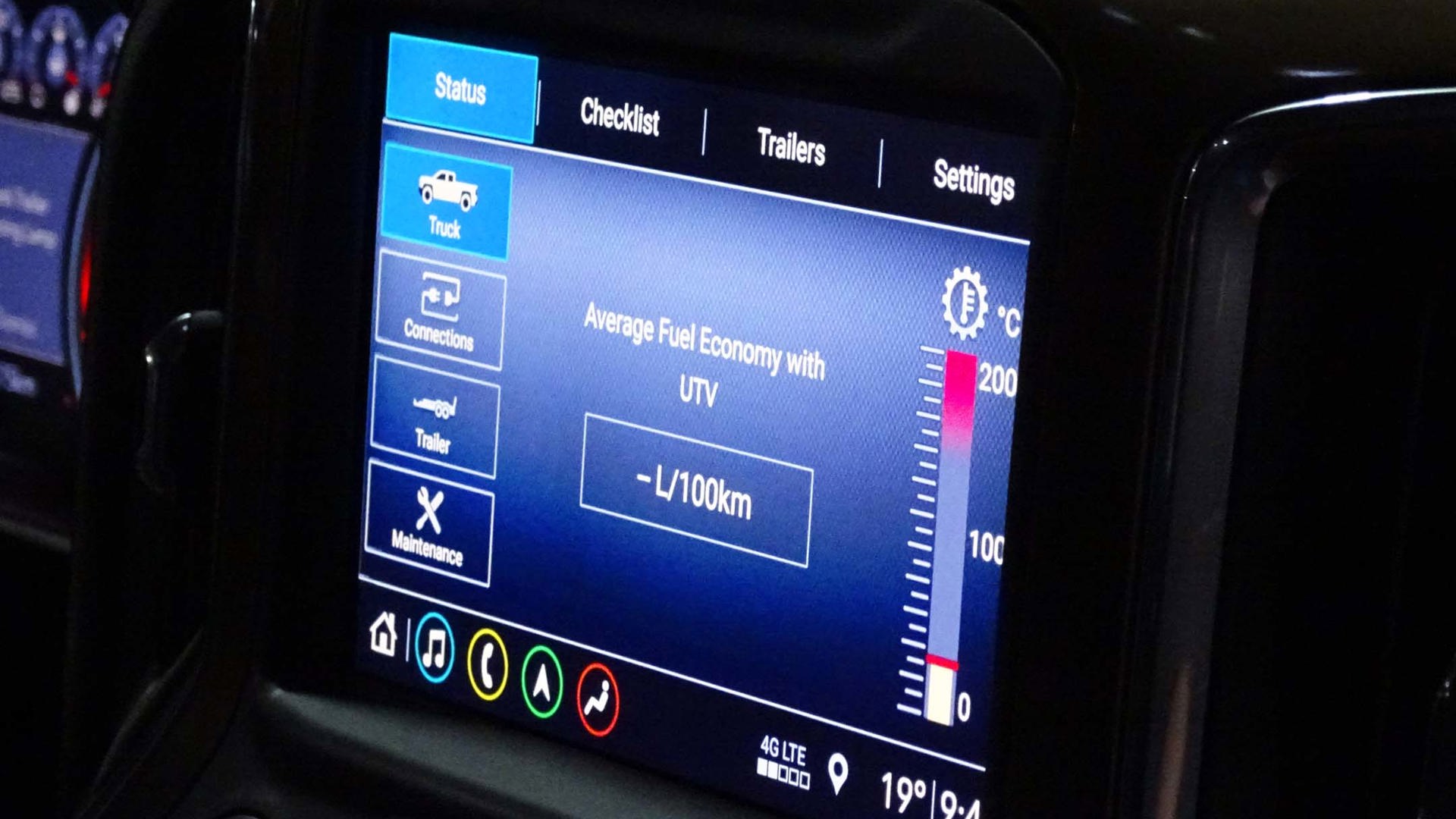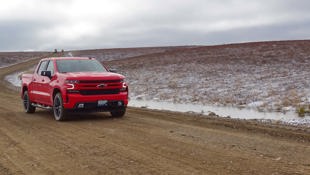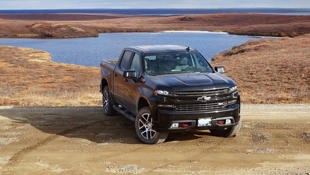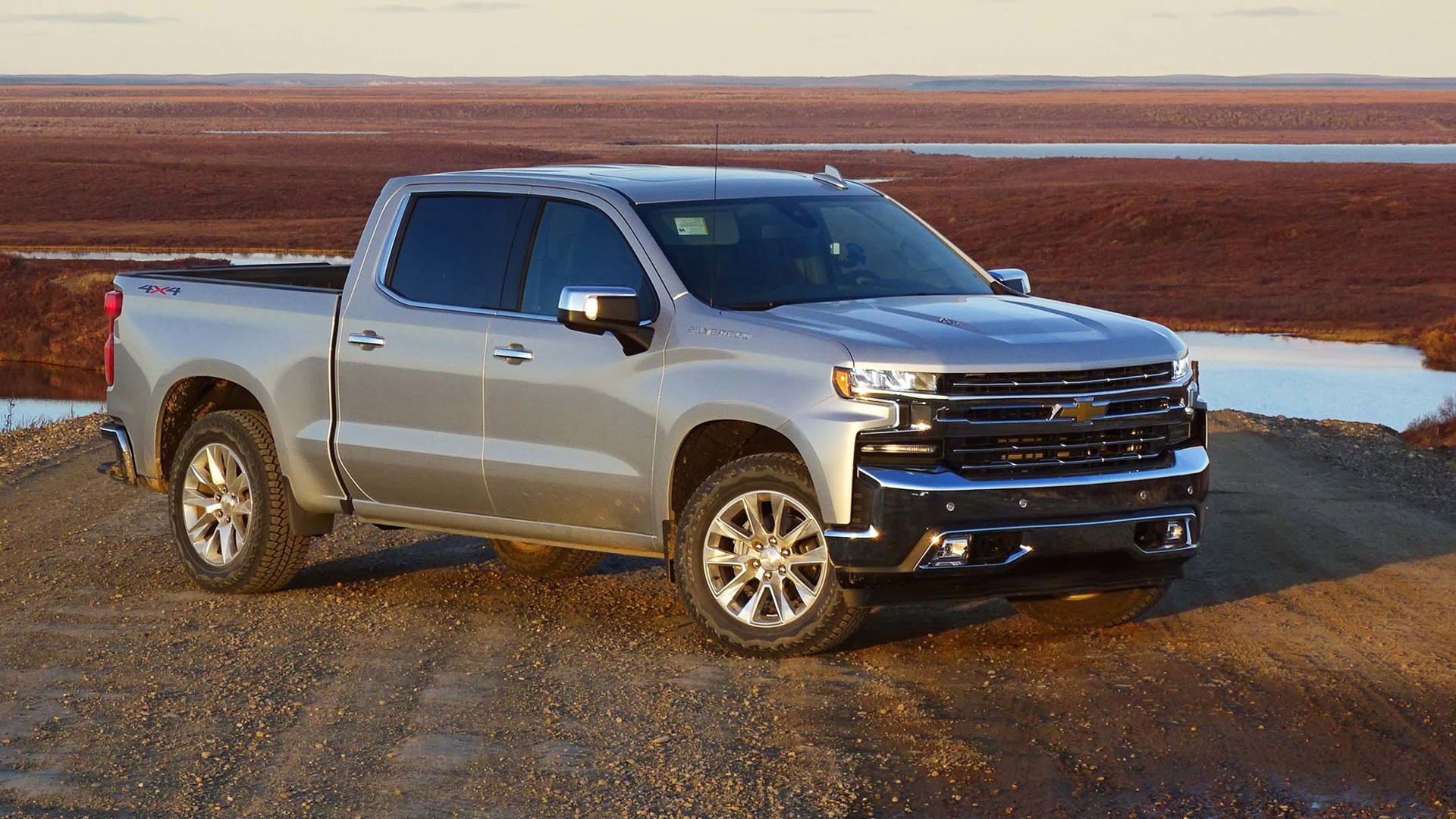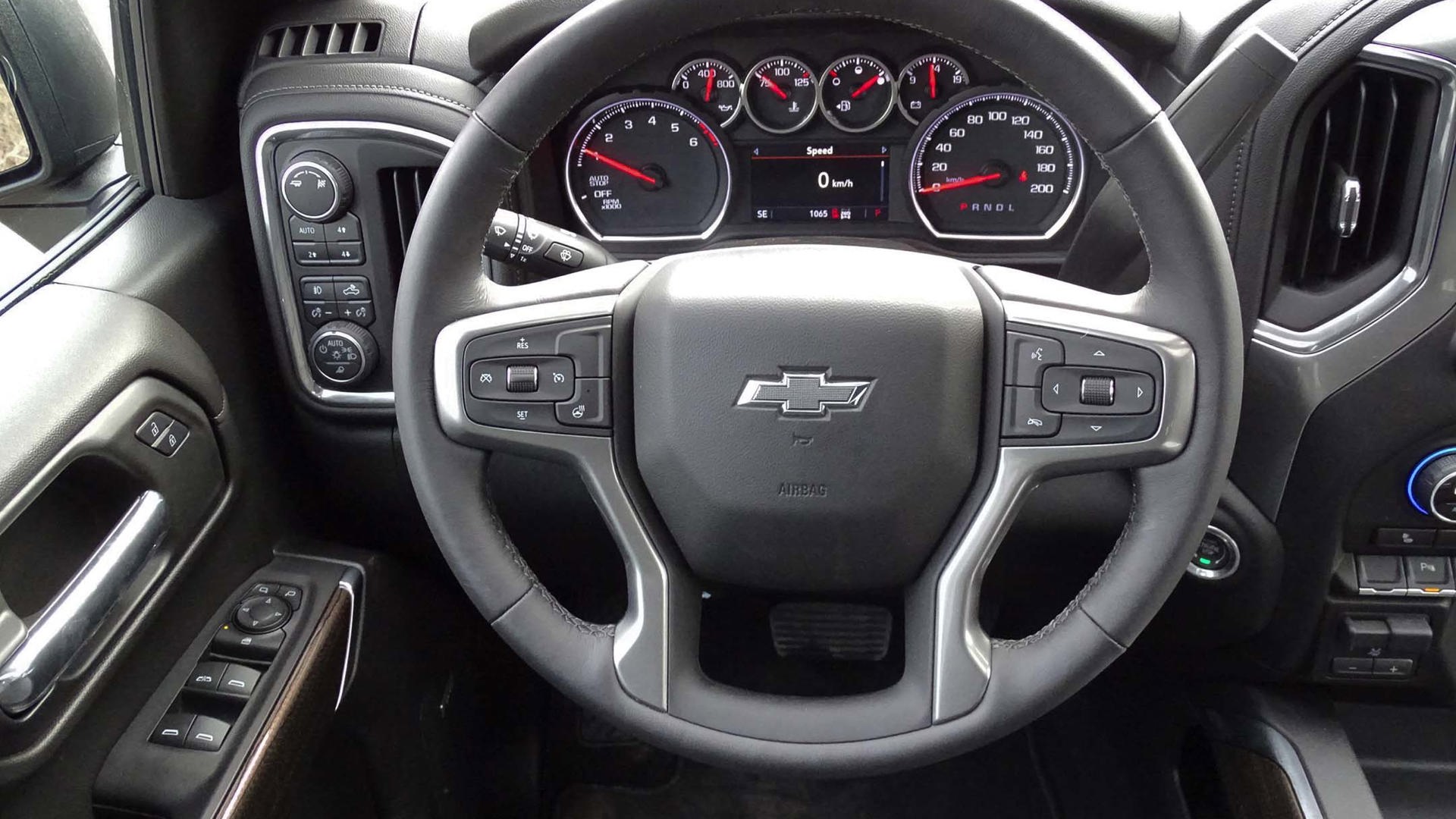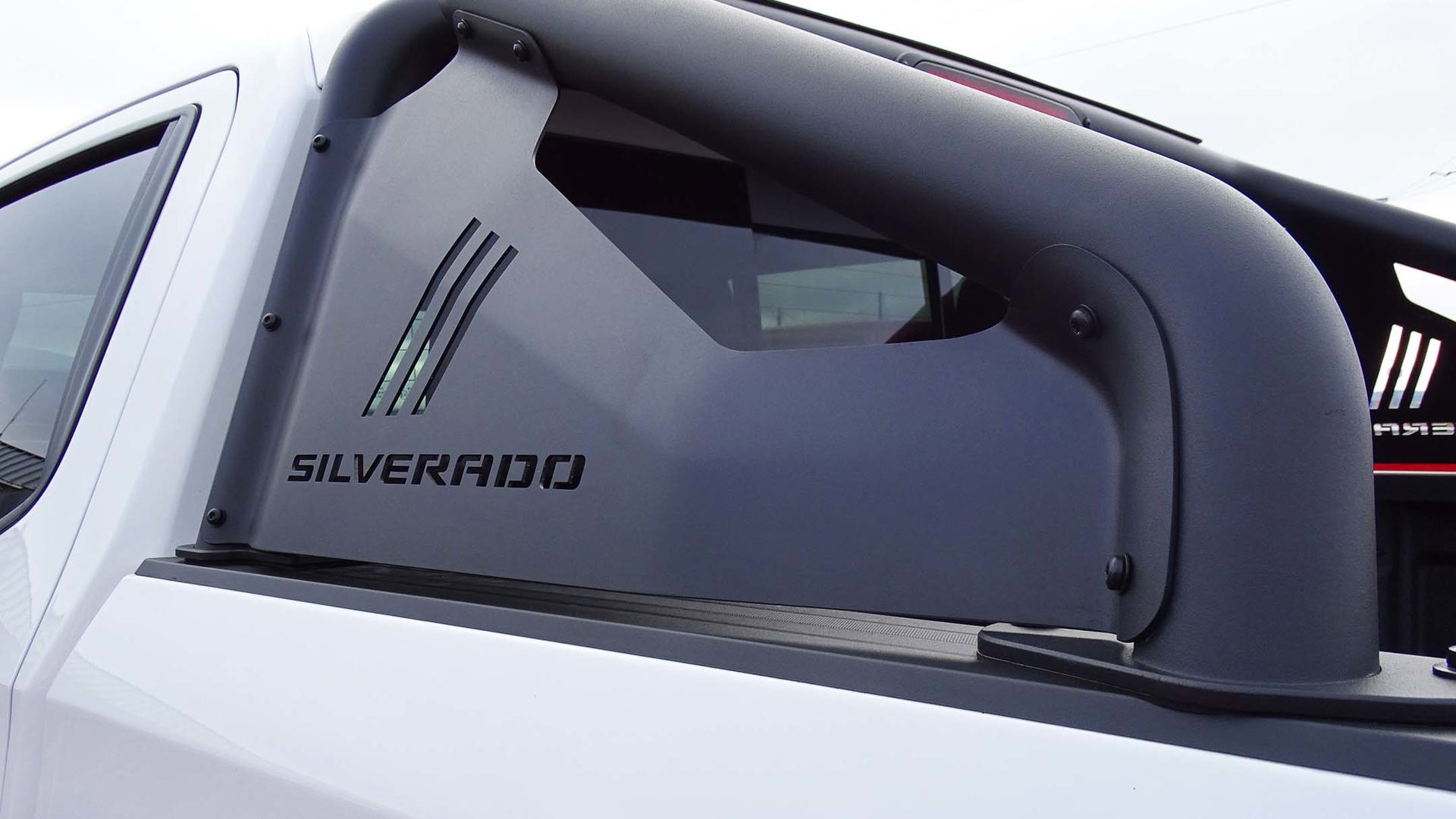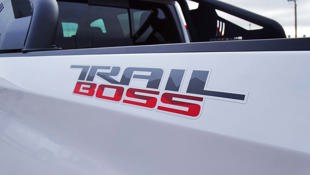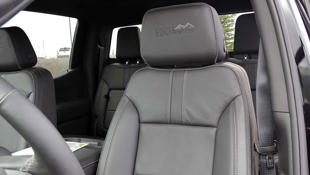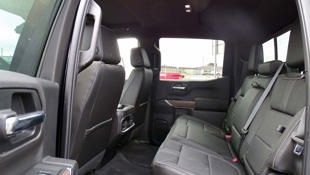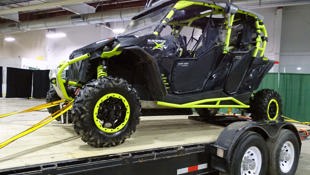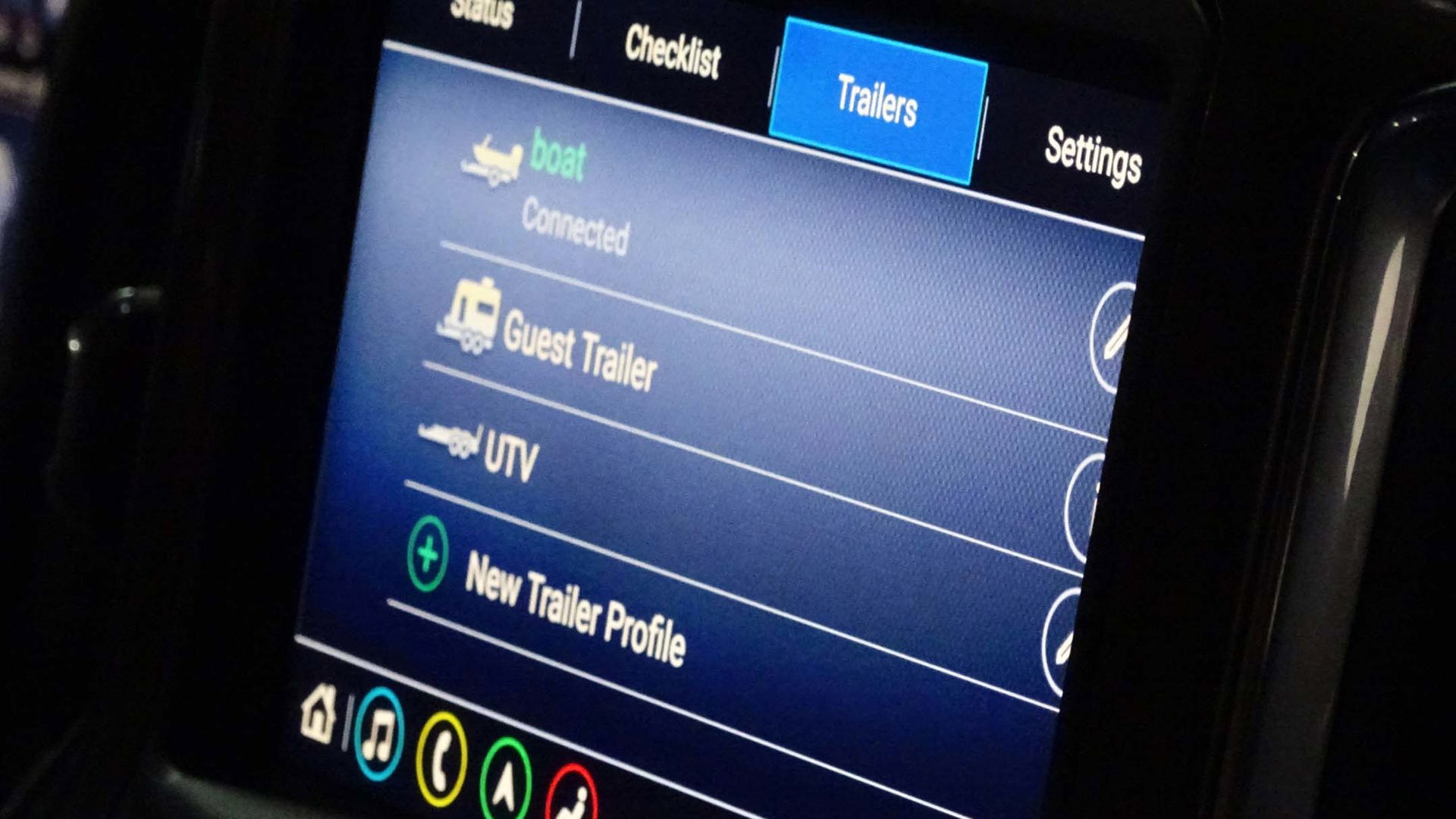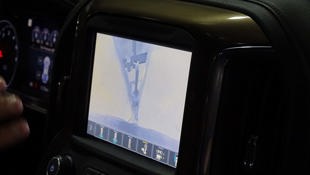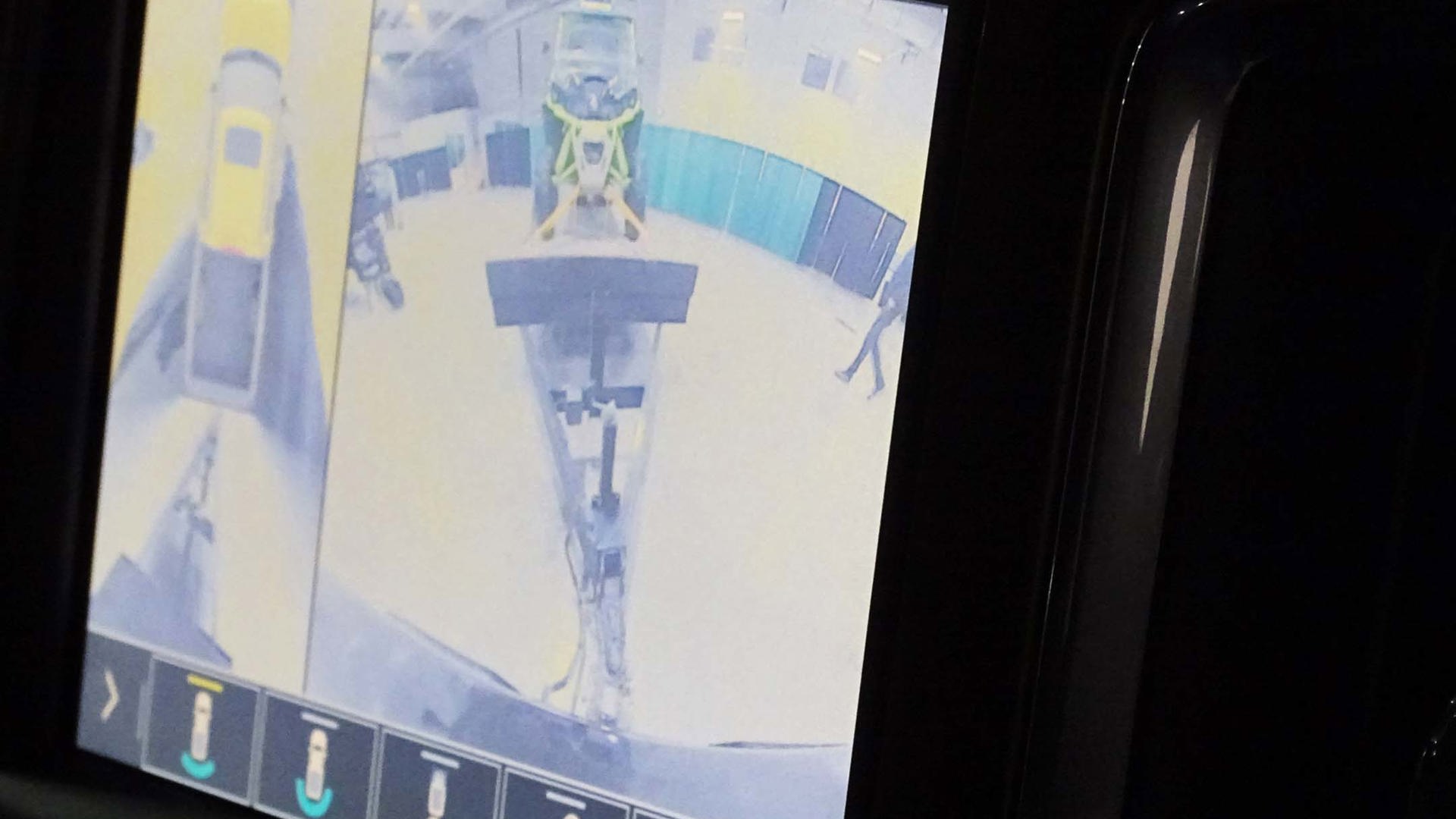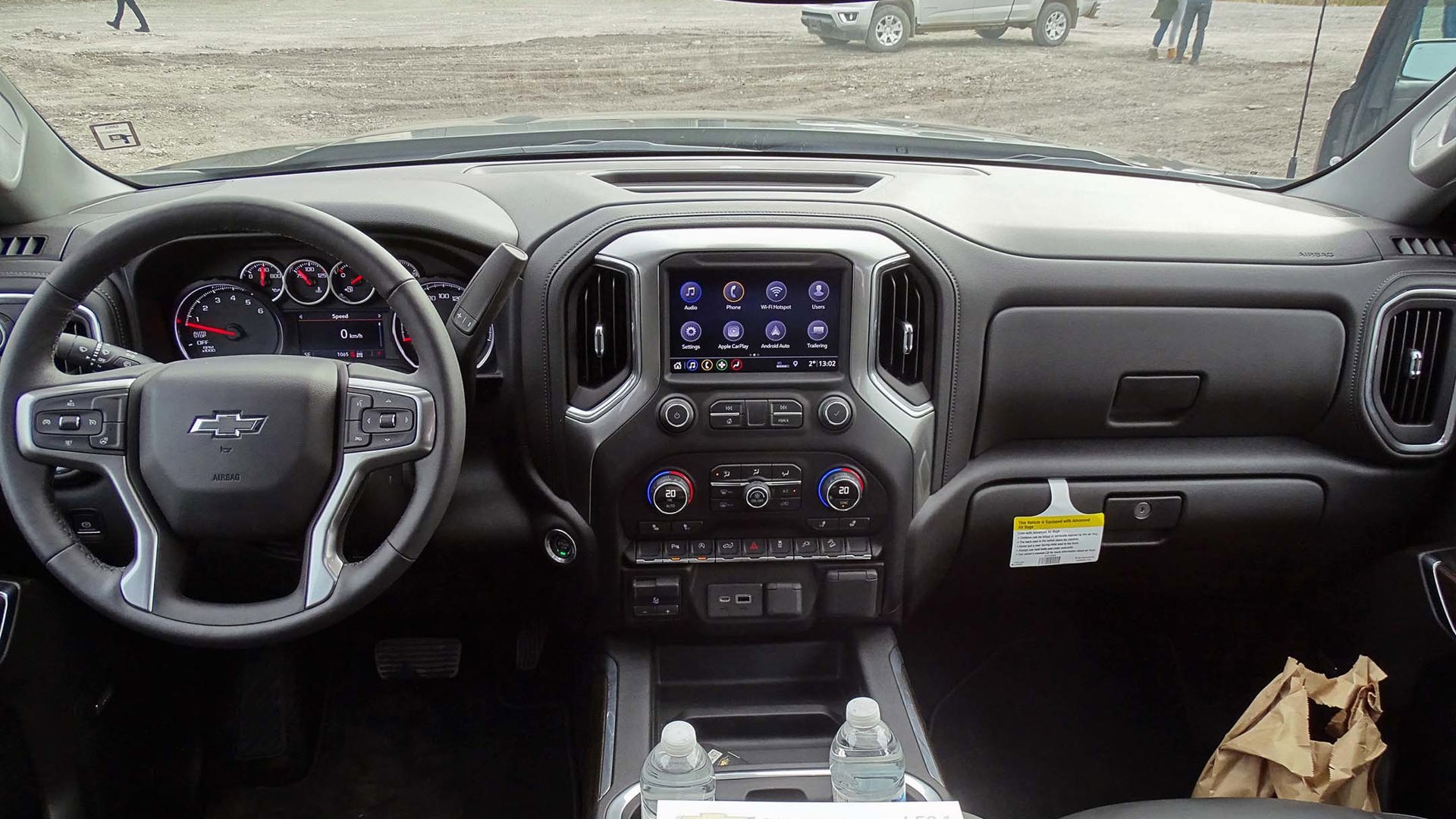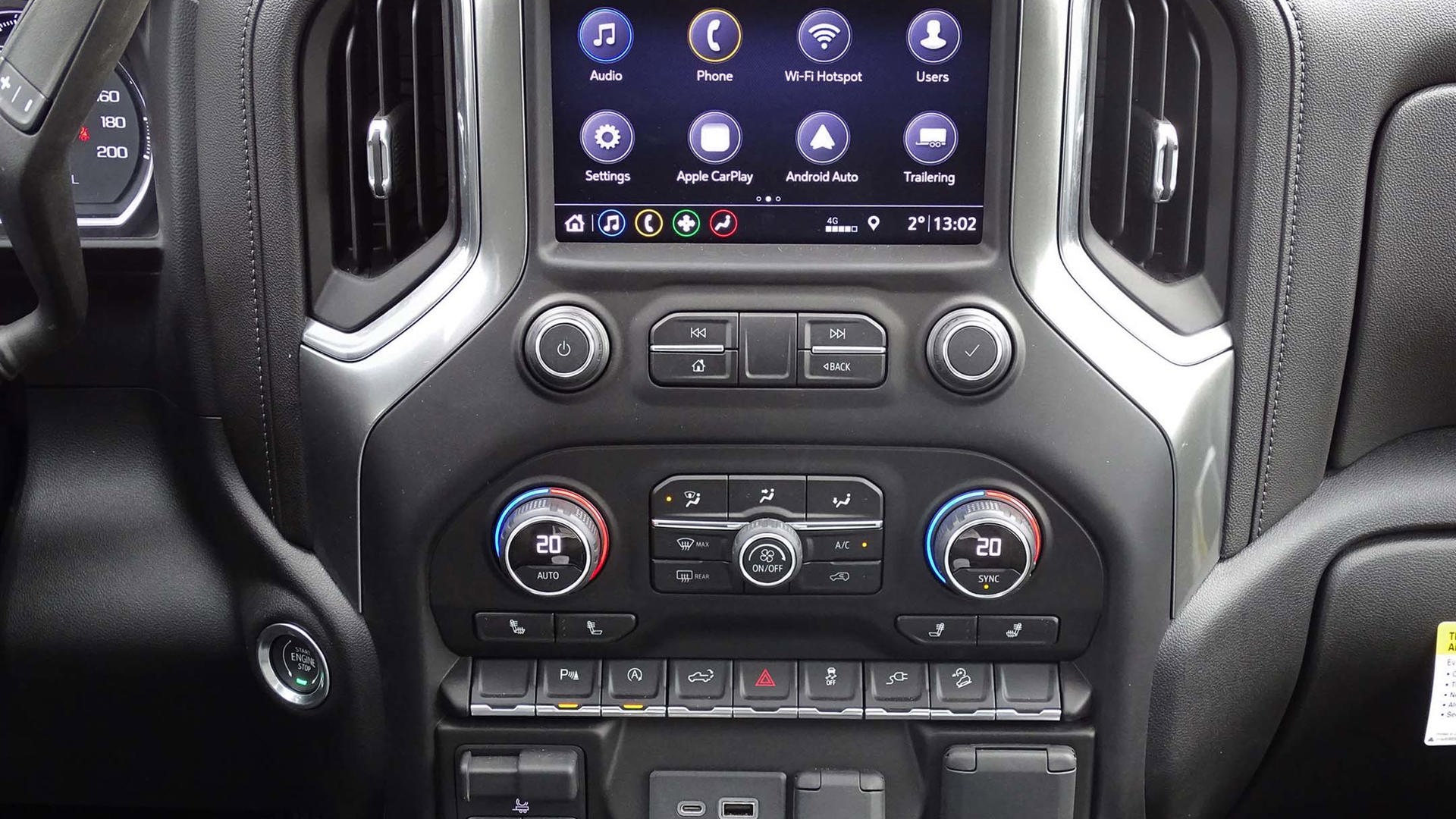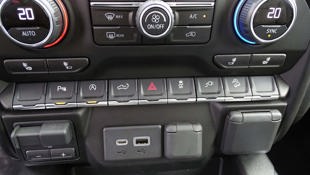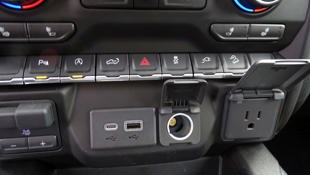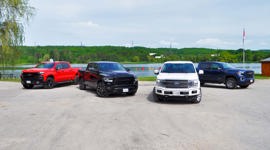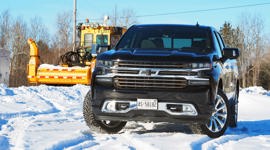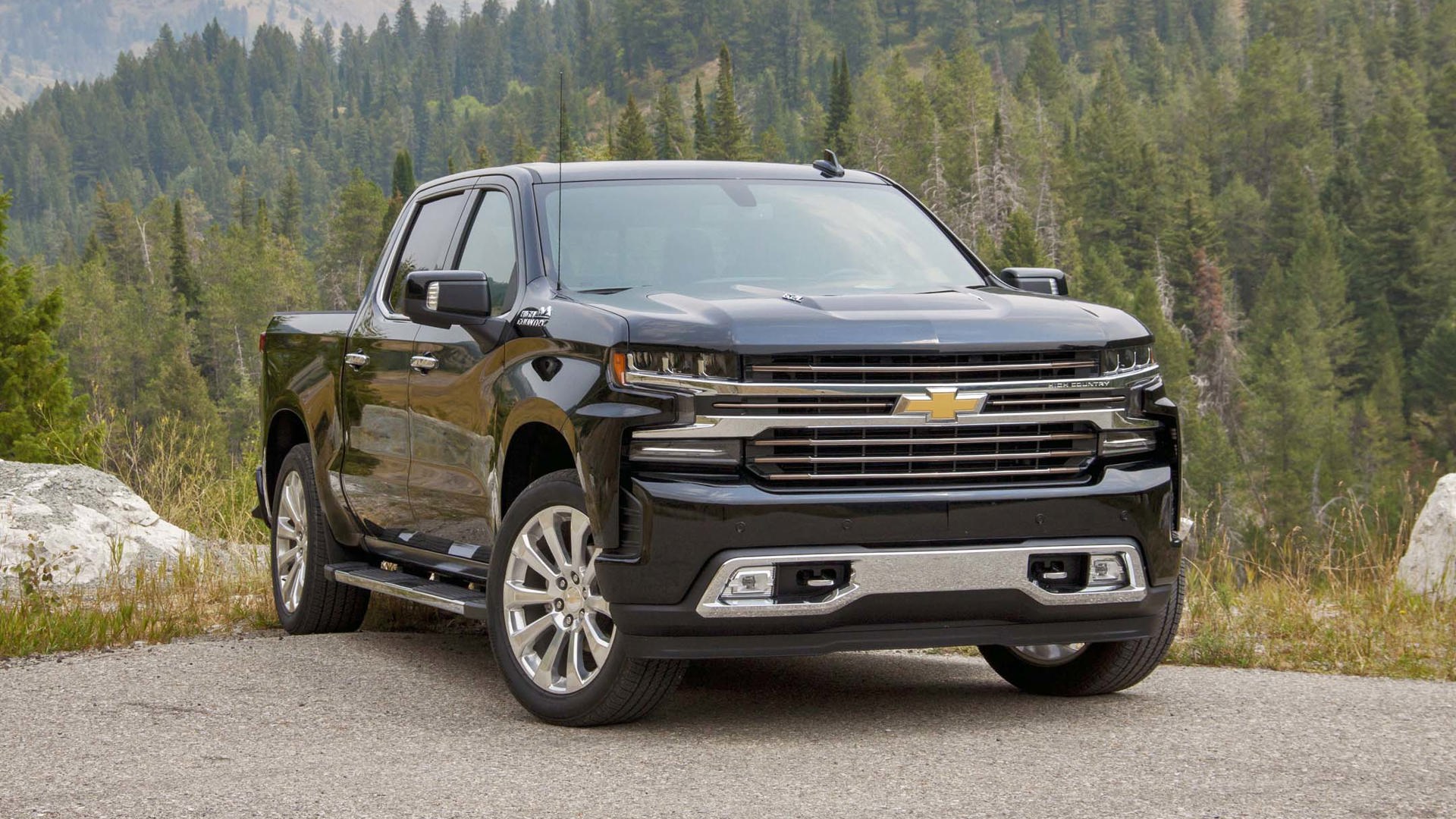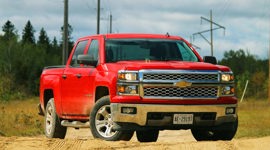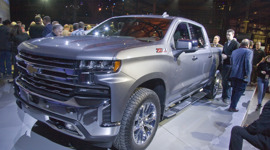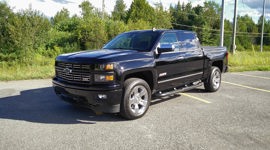Tailgates are cumbersome, awkward, and heavy. In today’s trucks, with their ever-higher tray heights, tailgates can be genuinely difficult to close.
The Silverados we drove were put through a genuine test.
And that is where the greatest trick of the 2019 Chevrolet Silverado comes in. Standard on top trims, and optional on the LTZ, a Silverado tailgate gets a bit of tech that has become a must-have in the SUV world – a power liftgate. Got an arm full of stuff? Nudge it with your knee, and it will (most times) pop up and close all by itself.
Drop your teenager off and they forget to close the tailgate as they traipse off into the hockey arena? Hit a button on the console and up it pops. Sadly, you can only get a power drop (not power close) on the lower trims of the truck, but in a world where most Canadians opt for the upper echelons of the price bracket anyway, that is likely less of an issue than I think it is.
And even if you don’t opt for the top trims, the new beds of the Silverado are a pretty spectacular party trick all on their own. Sure, they don’t have the Transformer-esque multi-tool tailgates of their GMC Sierra cousins, but the Silverado bed is a special unit. The tray is only about 40 mm wider on the outside, but on the inside it’s a whopping 175 mm wider, giving the Silverado class-leading cargo bed capacity. Chevrolet has a achieved this courtesy of their high-strength steel beds, which are roll-formed into a deep, wide shape. They point out you can’t do that with say, an aluminum bed.
There are also the 12 standard tie-down points (three levels on each corner) and nine optional points. The standard tie-downs are rated for up to 500 lb, the optional ones on the sides and back of the tray, 250. The Silverado’s side step has been deepened and made bigger, a direct result of complaints from consumers who said they couldn’t fit the toe of a steel-cap work boot into the previous generation’s step. There are cargo lights, but no way to turn them on from outside the truck, save for locking and unlocking it with the key fob. This technique will only turn them on temporarily. It’s a wide, well-configured truck bed that is more functional than that of the Ram 1500 or Ford F-150.
But the all-new Silverado has a lot more going for it then a fancy cargo bed.
The Last Road
All of this, we learned on one of the most intriguing roads in all of Canada. The new highway from Inuvik to Tuktoyaktuk. About 140 km long, this stretch of winding, undulating gravel road was built over four years, and is the first highway in Canada to reach the Artic. It also is the first all-season road to the hamlet of Tuktoyaktuk. Previously, this 600-person-strong community was accessible only by air in the summer and spring, and by an ice road that ran up the Mackenzie River in winter. That ice road was closed for the last time in April 2017, six months before the new highway was officially opened.
The highway is an engineering marvel. Built over 300 days of winter, often on days with less than one hour of sunlight, the highway had to built over the permafrost. A fabric membrane is laid down to protect the permafrost, before layers of deep gravel and sand are placed to insulate the frozen tundra from the heat of the highway and traffic, and then the gravel is laid on top. In parts, the deep gravel and harder packing mix, snagging at wheels as you drive through the softer parts. Elsewhere, rugged washboard rattles suspension, and large frost heaves and drop-offs test the limits of suspension travel.
This is not only an exciting road to be on, but it might be one of the very best driving roads in the country.
Ride and Handling
Which means that the Silverados we drove were put through a genuine test. Our journey to Tuk was in an LT Trail Boss with a two-inch lift and Rancho shocks. We had 20-inch wheels with Bridgestone Duelers on this unit, rather than the 18s with extra-aggressive Goodyear Wrangler DuraTracs. We also had the air dam delete and skid pads – both of which I was grateful for as we crested one unexpected speed hump and bottomed out on the other side.
Overwhelmingly, the Trail Boss was composed and stable. Rebound, even from the most jarring of potholes, was firm and assertive, arresting any return jounce with precision. The front wheels tracked true no matter the surface. The unladen rear end was a tad loose, but never ragged.
On the return journey, we had an LTZ without the lift kit and Rancho shocks, and with 22-inch wheels. The smaller sidewall and larger rim made for a much harsher ride through the potholes and divots, and while the chassis never felt unbalanced, I soon missed the damping of the upgraded rear shocks. My co-driver and I quickly decided that those shocks are worth digging into the option box for, no matter the trim. The lift kit is really just a set of blocks between the frame and the leaf spring mounts out back, and a longer control arm up front; and it is not nearly as valuable as the well-sorted shocks.
Interestingly, the all-terrains were more prone to digging into the softer sections than the road tires on the 22-inch wheels.
Steering is better weighted than it was in previous Silverados. No longer as light and over-boosted, it instead offers up an appropriate level of heft and substance. On these roads, it is easy to get sideways, and we found the traction control to be well balanced. It never cut power aggressively, but rather tugged gently at the reins. It was a little like running against a cushioning berm, as the electronic stability control kept the Silverado pointed in the right direction.
If you do think you’d like to turn all those systems off and use your own combination of opposite lock and throttle percentage to manage slip angles, I should tell you that the systems can never be fully turned off. I should also tell you that this is a pick-up truck, not a drift car. At least, that’s what people kept telling me….
Powertrains
We also sampled the two currently available engines – the 5.3L V8 and the 6.2L V8 – on our two legs. There are two iterations of the 5.3L available on the 2019 Silverado – a carryover paired to a six-speed gearbox with Active Fuel Management, and an updated 5.3L with Dynamic Fuel Management mated to an eight-speed box. The difference is in the cylinder-deactivation programming. AFM engines can switch between four- and eight-cylinder modes, while DFM donks can run through up to 17 different cylinder-firing patterns, all powered by a computer brain that detects torque load and throttle requests 80 times per second. That means the DFM engines run with fewer than eight cylinders firing, up to 60 percent of the time, saving fuel.
Apart from that, the power output is unchanged between the two 5.3s – they both produce 355 hp and 383 lb-ft of torque. The eight-speed transmission does do a better job of putting that power to the road, but it’s not a patch on the 420 hp/460 lb-ft 6.2L.
The raucous, rowdy, more rambunctious of the V8s, the 6.2L is absolutely the one to get. It surges forward with authority, sounds great while doing so, and makes you go, “Heh, I’m glad I chose this one” every time you apply throttle pressure.
For reference, the 4.3L V6 puts out 305 hp and 285 lb-ft, the 2.7L turbo 310 hp/348 lb-ft; and the diesel is not yet released.
Only the two DFM engines have official fuel economy ratings at present, with the 5.3L rated at 14.1 L/100 km in the city and 10.2 on the highway. The 6.2 will return 15.0 and 12.0 L/100 km city/highway. We were surprised to see numbers in the high 20s on our journey, though the combination of constant wheelspin and digging through soft gravel render skewed that number high.
GM claims a five percent improvement in fuel economy compared to outgoing models. That comes via the DFM system, the new eight-speed gearbox, as well as a reduction in weight to the tune of about 200 kg. That comes courtesy of lightened frame rails, and the use of aluminum in “anything with a hinge”. All four doors and the tailgate are now aluminum.
Despite being higher and wider than the 2018 edition, the 2019 Silverado has a seven percent lower drag coefficient. The 2019 Silverado has the benefit of small aero tweaks to the mirrors, and better sealing of the engine bay and wheel arches. That helps not only with fuel economy, but also aids in interior comfort.
Cabin Comfort
Wind noise, road noise, vibration and harshness are up yet another notch from the previous generation, which was already a class leader in NVH.
Rear-seat room is increased by about 75 mm, courtesy of a roughly 100 mm increase in wheelbase, and the cabin feels properly comfortable for full-size adults in both rows. The rear seats also feature a neat in-seat storage compartment, nestled into the seat back. The seat back is now rigid-mounted on the back of the cabin in order to reduce weight and vibration, but the seat bottoms lift to expose yet more storage.
Both rows of seats are still a little firm, and not quite as supportive as I’d like – especially on loose roads. The dashboard is still awash in hard plastic, and after stepping out of a Ram 1500 recently, with its soft leather and premium materials, this interior is underwhelming.
I always appreciate a heated steering wheel – it’s standard on High Country, and available from RST upwards. This particular unit needs to be dialled up a notch, though. It simply wasn’t toasty enough up in the Arctic Circle.
The available seven-inch head-up display is a nice feature, and Chevrolet’s MyLink infotainment system is not to be sneezed at. It naturally includes Android Auto and Apple CarPlay, as well as a Wi-Fi hotspot. Wi-Fi hotspots are cool, and with that, plus Android Auto/Apple CarPlay, you won’t need navigation. That is of course, until your free trial period runs out and you need to start paying for the Wi-Fi and OnStar subscriptions…
Trailer Tricks
Probably the coolest addition to the Chevrolet infotainment and vehicle monitoring system is the new trailering app. It’s an expansion of the offering Chevrolet already had, but now with a lot more functions and tricks. Perhaps most useful for most people is the new automatic trailer light tester. It will cycle through all the lights, and even diagnose the issue for lights that aren’t working.
There’s a full set of cameras, including a back-up view with hitch guidelines, which you can zoom in on to get a clearer view of the coupler once you’re close to the trailer. The hitch point is lit by an LED lamp in the tailgate.
An optional trailer-mounted camera comes with its own input plug – though that plug deletes the four-pin connector in the rear bumper. The camera allows you to see behind the trailer, and you can combine that view with the projection from the side-mirror cameras, giving more views as you back up. The trailer cameras can be activated at speed too, so you can check the status of your trailer after you go over a particularly bad bridge join… for example.
You can even add Bluetooth-connected tire pressure monitors to your trailer tires, and the Silverado will monitor tire pressure and temperature on your trailer in real time.
For the infrequent tower, or just the fastidious list-checker, Chevrolet has developed a checklist program with all the basic functions. You can then assign a checklist to an individual trailer, say if you have a travel trailer, a boat trailer, and a cargo trailer – you can save each trailer’s profile, and use a unique checklist for each one. You can even add custom tasks like “pack helmets” to a trailer if it’s for your powersports equipment or “buy flowers” if it’s for your boat trailer.
For the really infrequent tower, the app will even show you a visual guide for each of the main steps. “Remove wheel chocks” shows the wheel chocks, “insert coupler pin” shows the coupler. All of this makes towing hassle-free.
The official tow rating varies trim to trim: the lowest rating being the 7,200 lb of the upcoming 2.7L turbo four. Diesel tow ratings are not yet released, but will be on par with the 4.3L V6, which is good to pull 8,000 lb. That’s followed by 11,000 lb on the carry-over 5.3L V8 and six-speed auto combination; the updated 5.3L V8 with the new eight-speed tranny will pull 11,600 lb.
The 6.2L V8 with the 10-speed auto is the natural tow king of the lineup with an official rating of 12,200 lb.
Conversely, the 6.2L-equipped trucks have the lowest payloads of 2,100 lb, while the 4.3L V6 gets the biggest payload of 2,500 lb.
We did a brief test using a 6.2L V8 and a trailer weighing about 5,500 lb in total and found the truck to be totally unruffled. In this day and age, pretty much any truck can pull loads over 5,000 lb without raising an eyelid.
Trail Boss, Trim Levels, and Ticking Options
Pricing is due to be announced on October 1, but in the meantime we can tell you that the Silverado will be offered in eight trim configurations, three of which are all-new. Each trim is offered in one of three configurations: single, double, and crew cab. Single cab units get an 8' box, while double cab rigs get a 6'6" box. Crew cab Silverados can be had with either a 6'6" or 5'8" box.
The base trim, aka fleet special, is the Work Truck, which comes standard with the 4.6L V6 but can be optioned with the 5.3L AFM V8 and six-speed box. It also gets 17-inch wheels, vinyl or cloth seats, and a cheekily labelled “seven-inch diagonal touchscreen”.
Custom trim Silverados add 20-inch alloys, LED taillamps, body-colour trim and the option of a dual exhaust.
The first of the new Trail Boss packages bolts on to the Custom trim. Trail Boss Custom trucks get the two-inch lift kit, plus the Z71 Package of Rancho shocks, locking rear differential, two skid plates for the oil pan and transmission, air-dam delete and 18-inch wheels fitted with Goodyear DuraTrac tires. It is the first trim available with SiriusXM and OnStar. If you opt for the Convenience 1 Package, you also get the power-down tailgate with lift-assist, and remote start.
LT trims get the 2.7L turbo four with eight-speed box standard, but can be upgraded to the new 5.3L DFM engine with eight-speed auto. It gets an eight-inch colour screen, optional leather, and three option packages: True North, with towing package, locking rear axle, and the Convenience 1 Package; LT Z71; and Safety 1, which includes front and rear park assist, side blind-zone warning, and rear cross-traffic alert.
Also new, and with the same engine options as the LT, the RST is a city-focussed truck with body-coloured styling trim, passive entry, push-button start and black Bowtie logos. This is where the option package Pandora’s box opens wide, with a raft of available packages including Convenience 1, Convenience 2 (which comes with a 110V power outlet), heated seats and steering wheel, and the rear seat storage package. You can also opt for Safety 1, the leather package, trailer pack, max-trailering with brake controller, and the Advanced Trailering Package, which includes the features I spoke of above.
The RST is the first trim with the wheel well liners for better drag coefficient, dust intrusion and cabin noise.
The second Trail Boss edition, the Trail Boss LT, gets access to all those option packs, as well as LED headlights and taillights. It gets the 5.3L V8 and eight-speed gearbox as standard.
LTZ is perhaps the best value. It comes standard with the new 5.3L, and is the first trim available with the venerable 6.2L. It can be optioned with the head-up display, power-open-and-shut tailgate, Z71 off-road package, and a rear camera mirror – handy when your tray or rear seat area is full of gear.
But the truly well-heeled will opt for the High Country. It too is standard with the 5.3L, but most High Country buyers will opt for the 6.2. It gets the trick power tailgate standard, as well as power side steps, and has available 22-inch wheels.
Yes, but how much does it cost?
Pricing for these option packs is not yet given, but Chevrolet does say that the MSRP for the “high value” and “high volume” trims will be lower than it was for the previous generation. The depth and breadth of the option packages, though, mean that MSRP for each trim will be largely irrelevant. The ability to scale up the invoice with your wish list is as high as the hamlet of Tuktoyaktuk is north.
Again, proper numbers won’t be available until Chevrolet releases them, which should happen on October 1.
The Silverado will officially arrive on the lot sometime around then.
